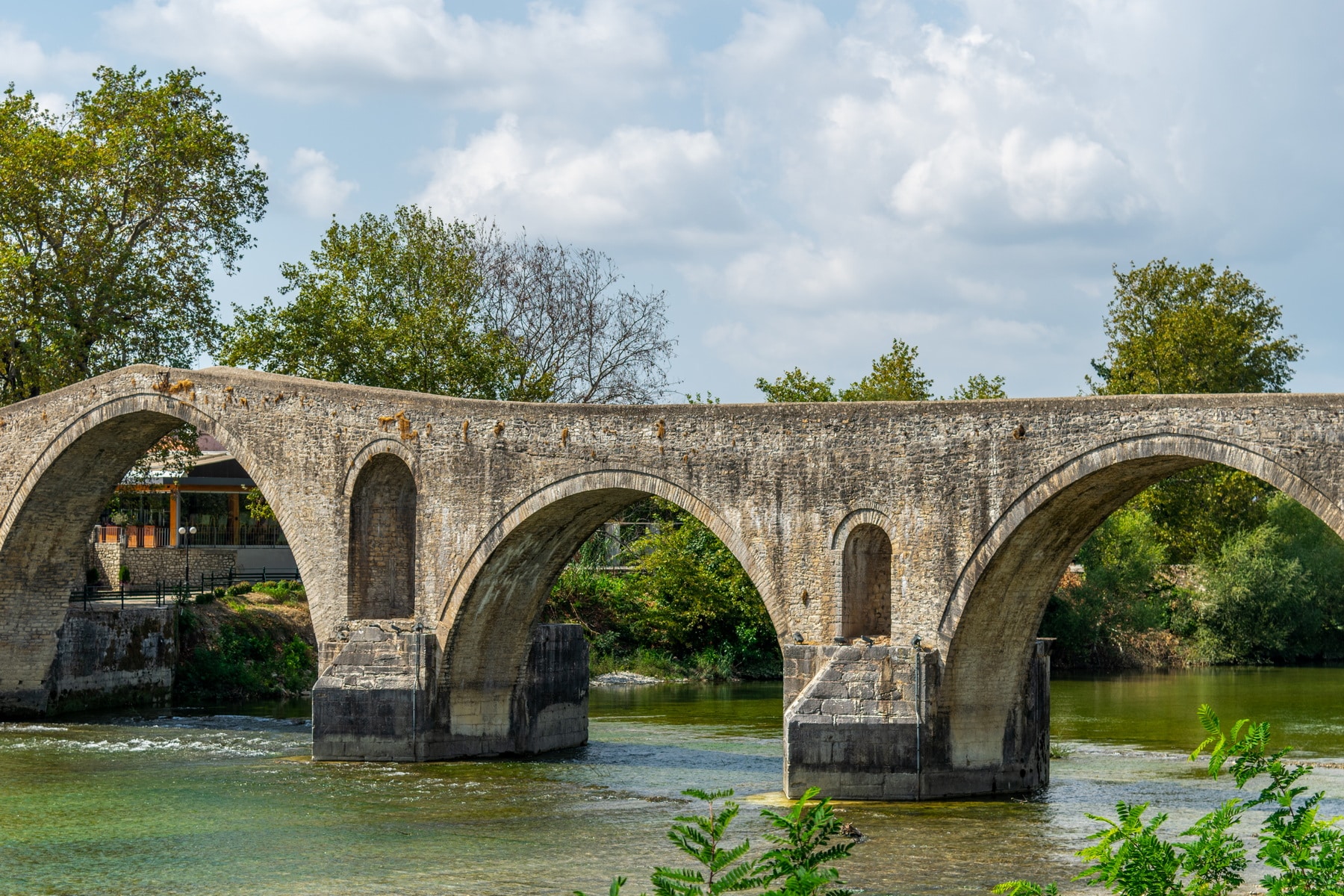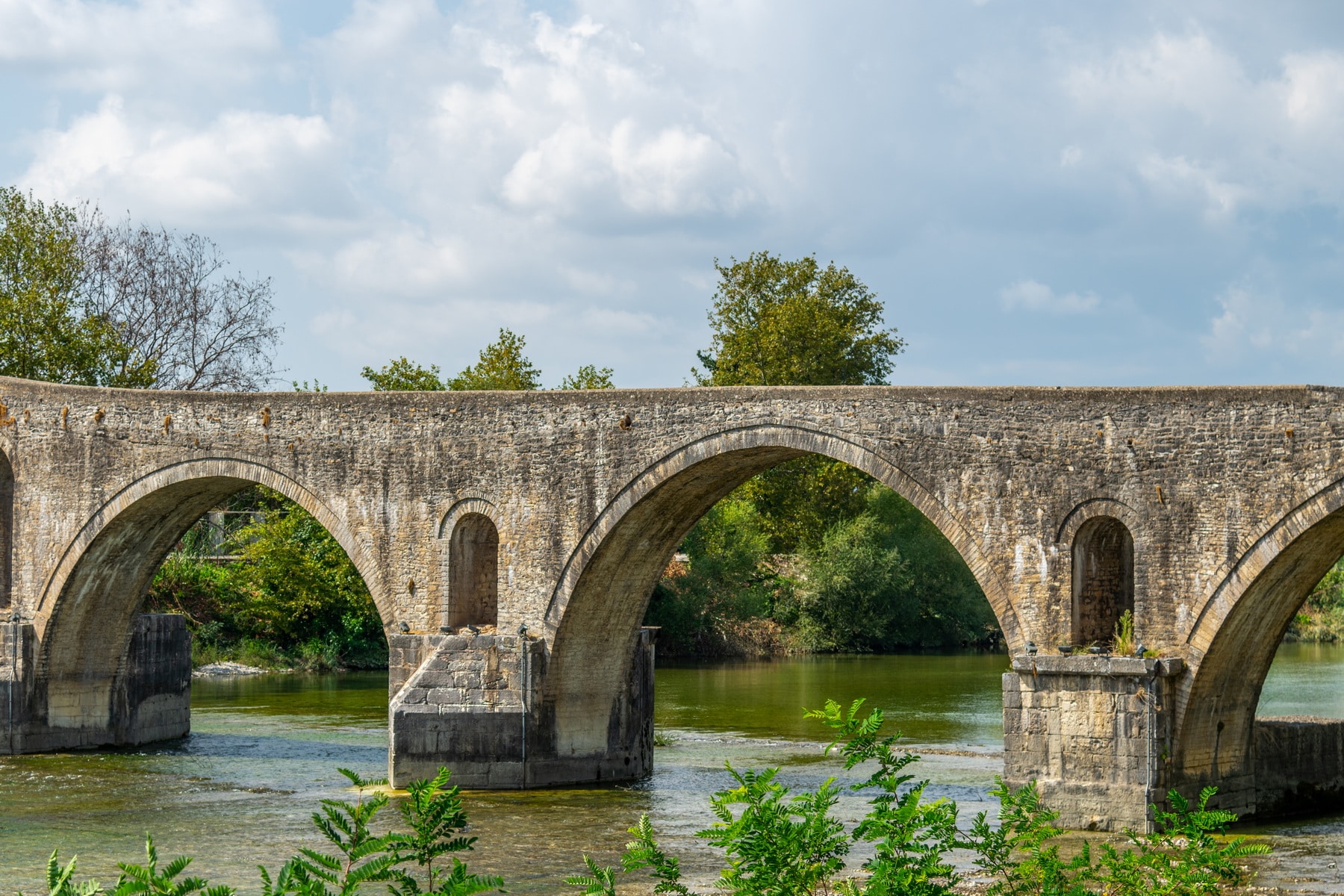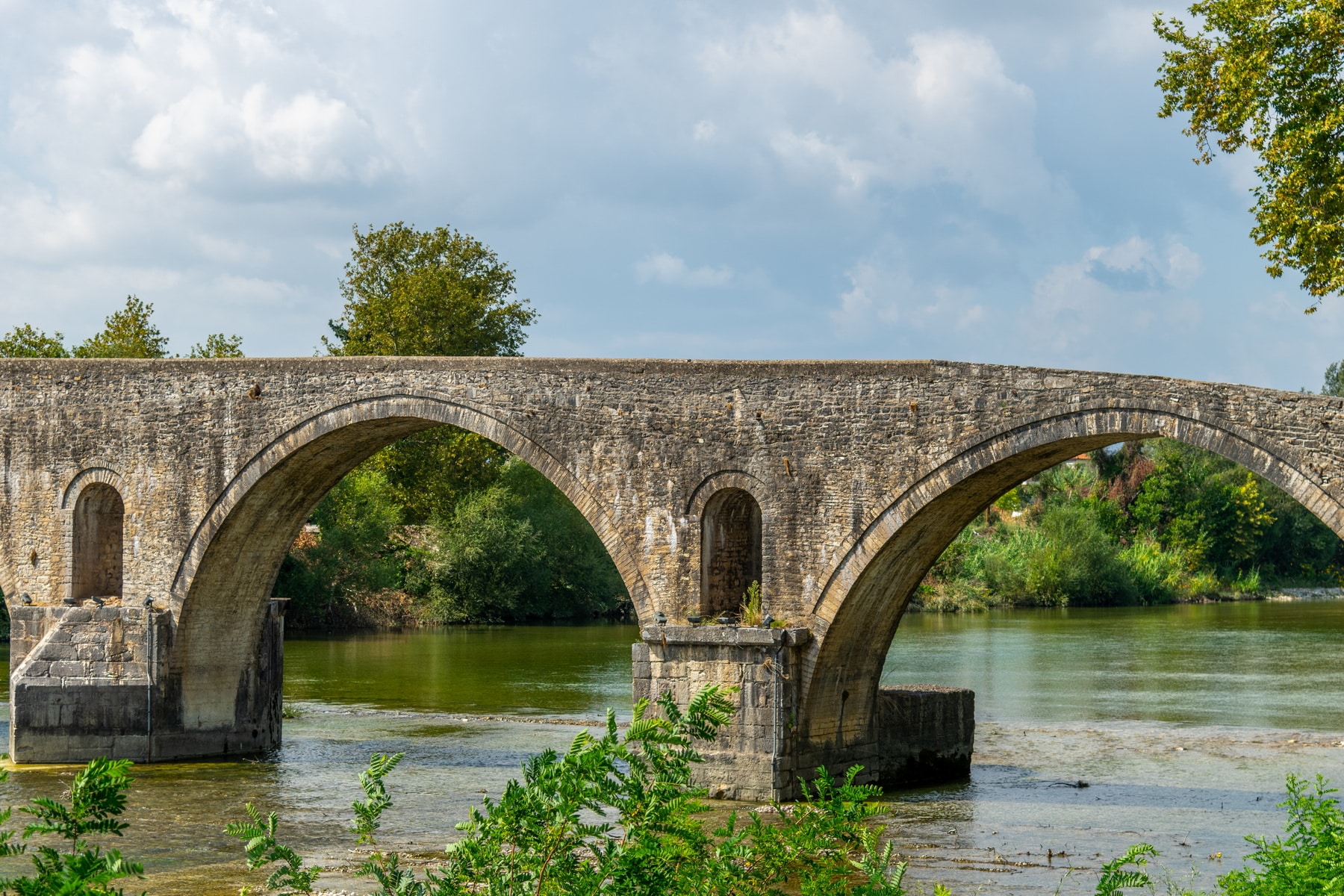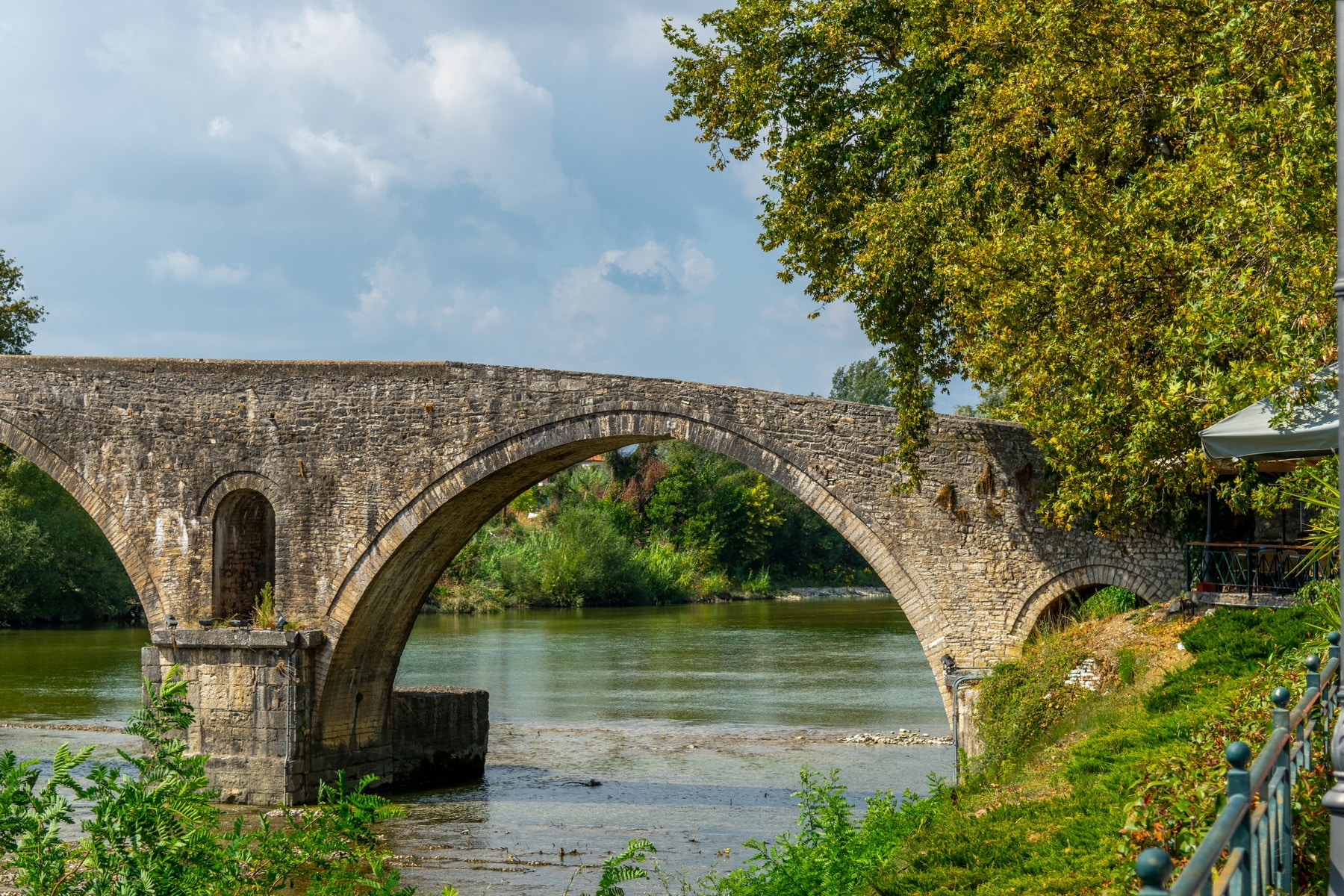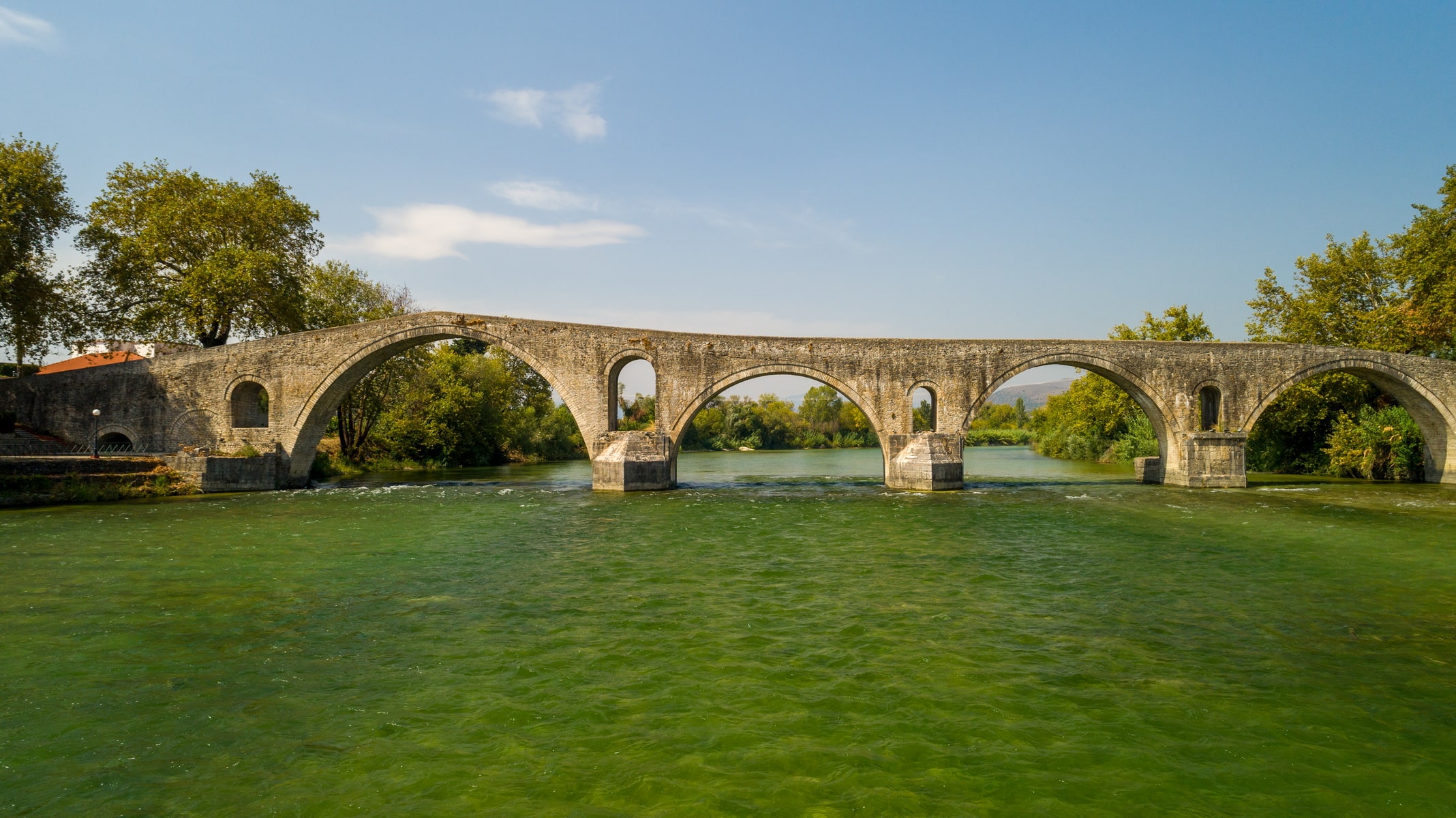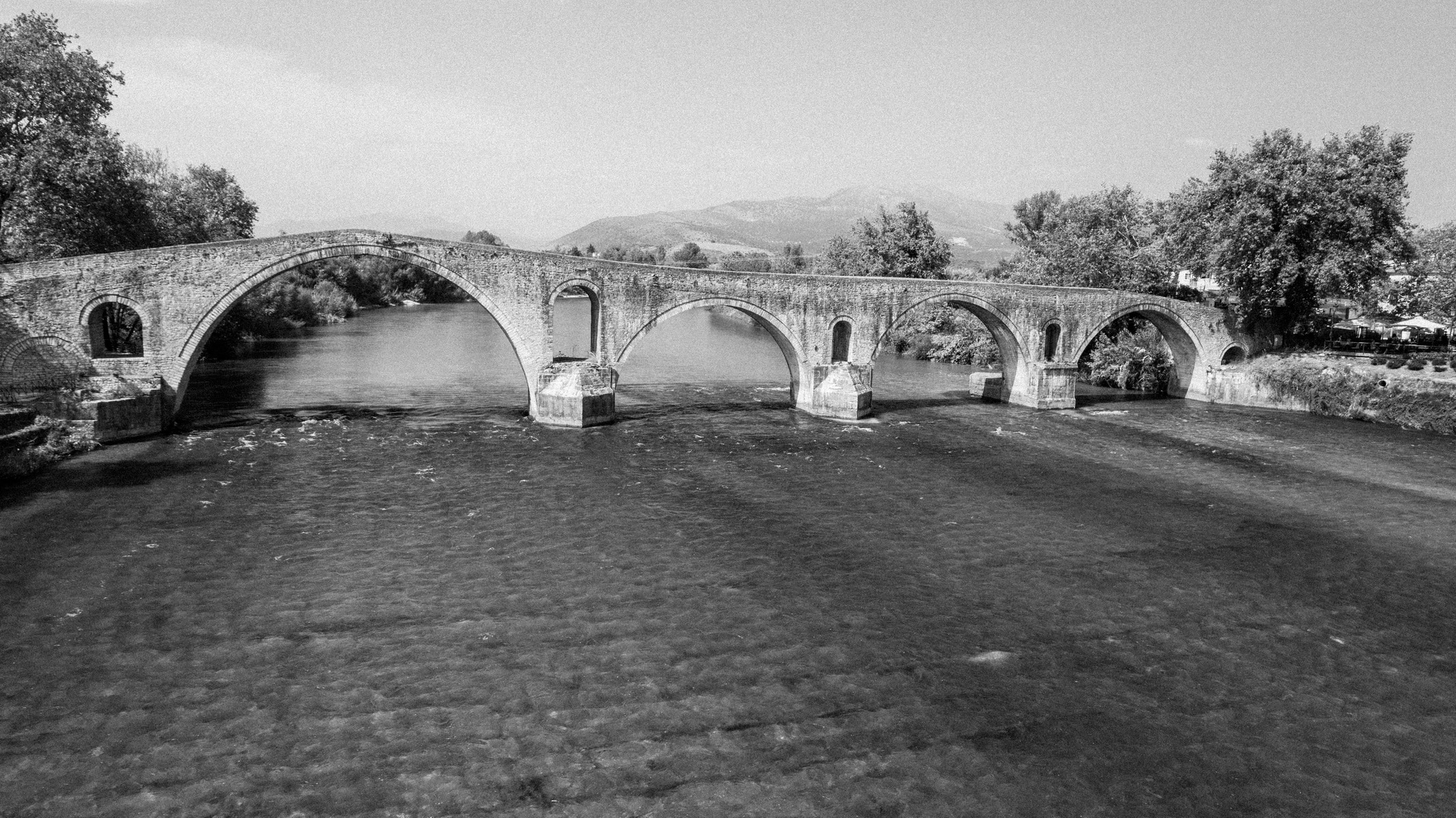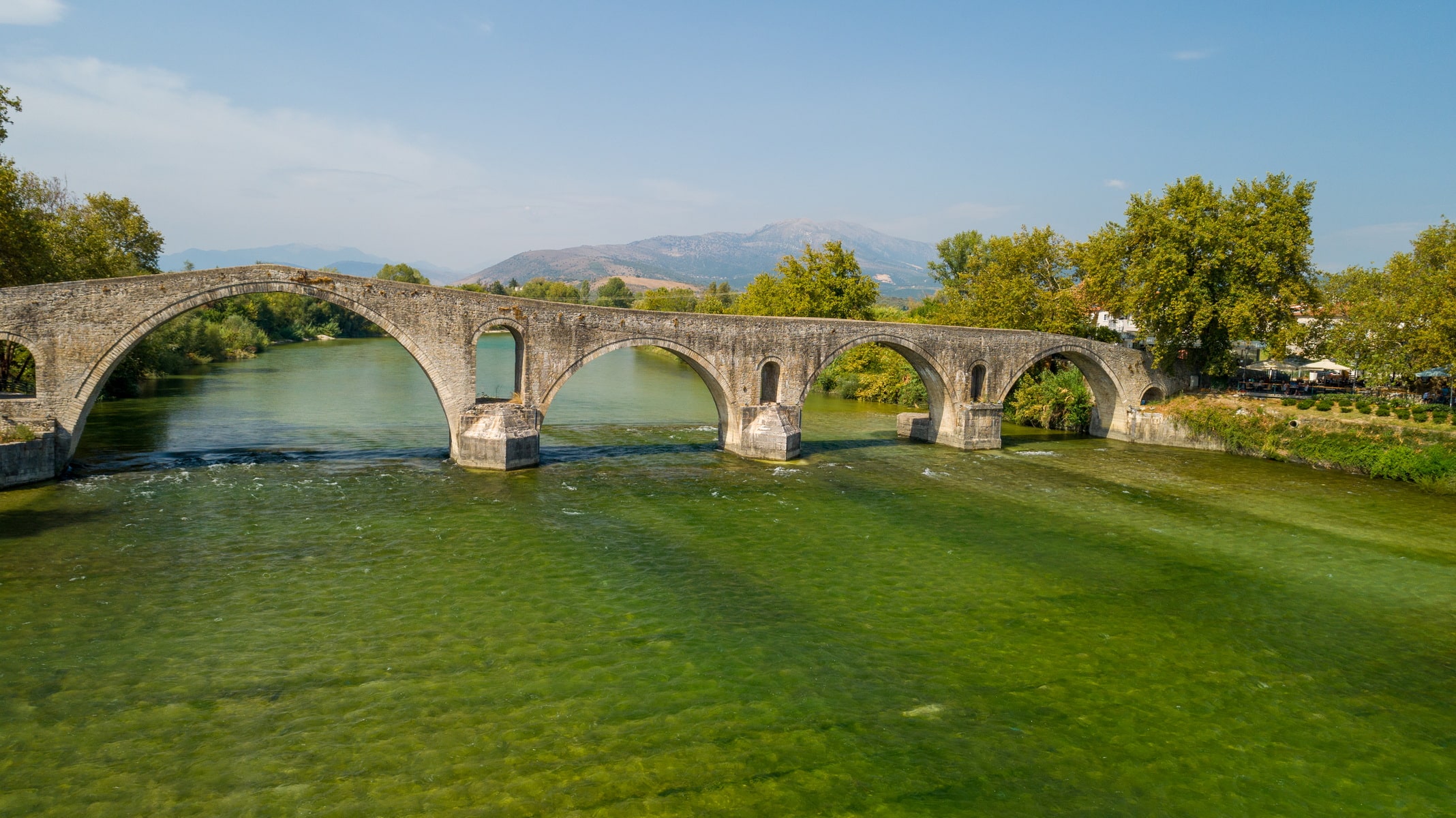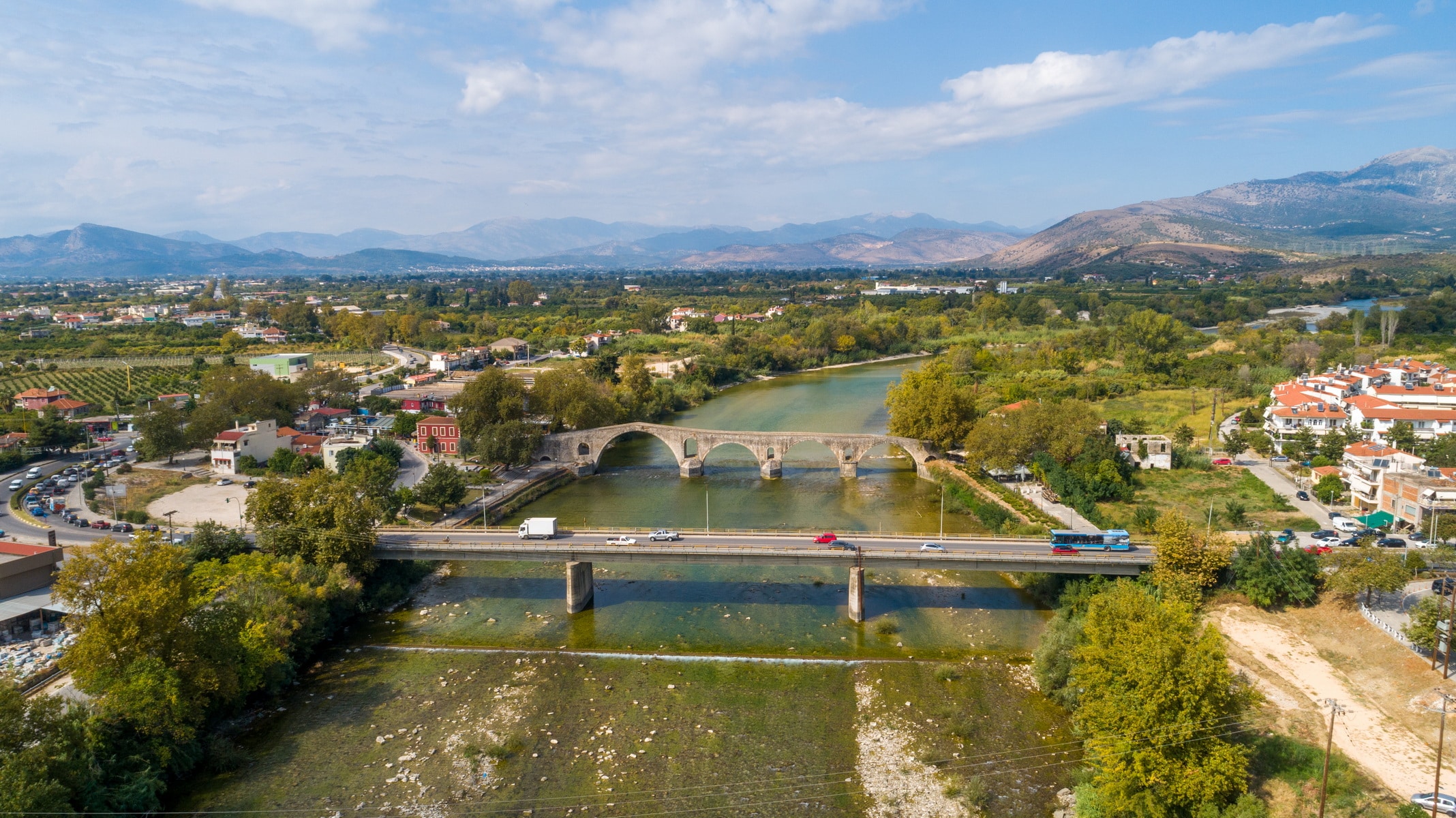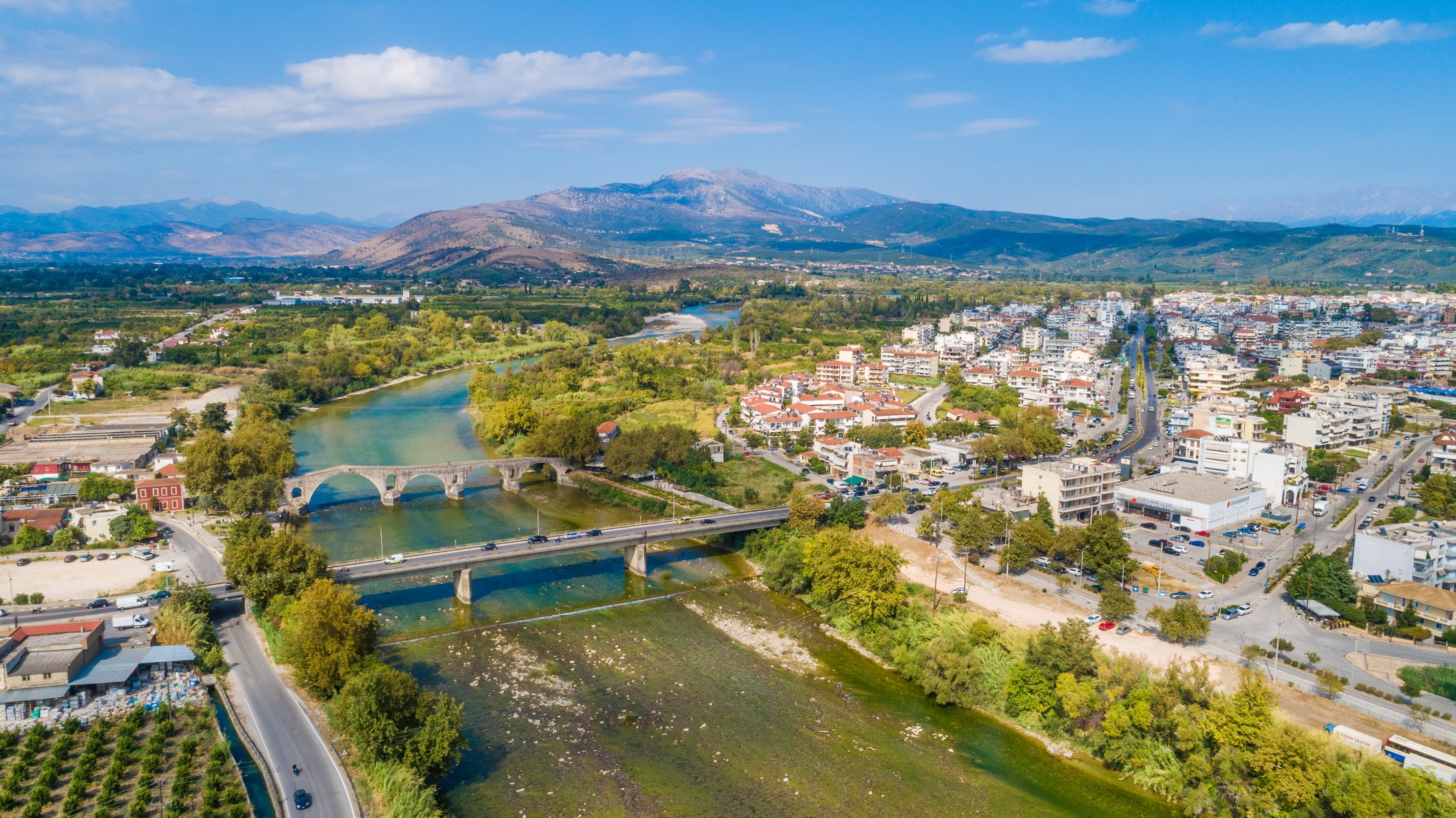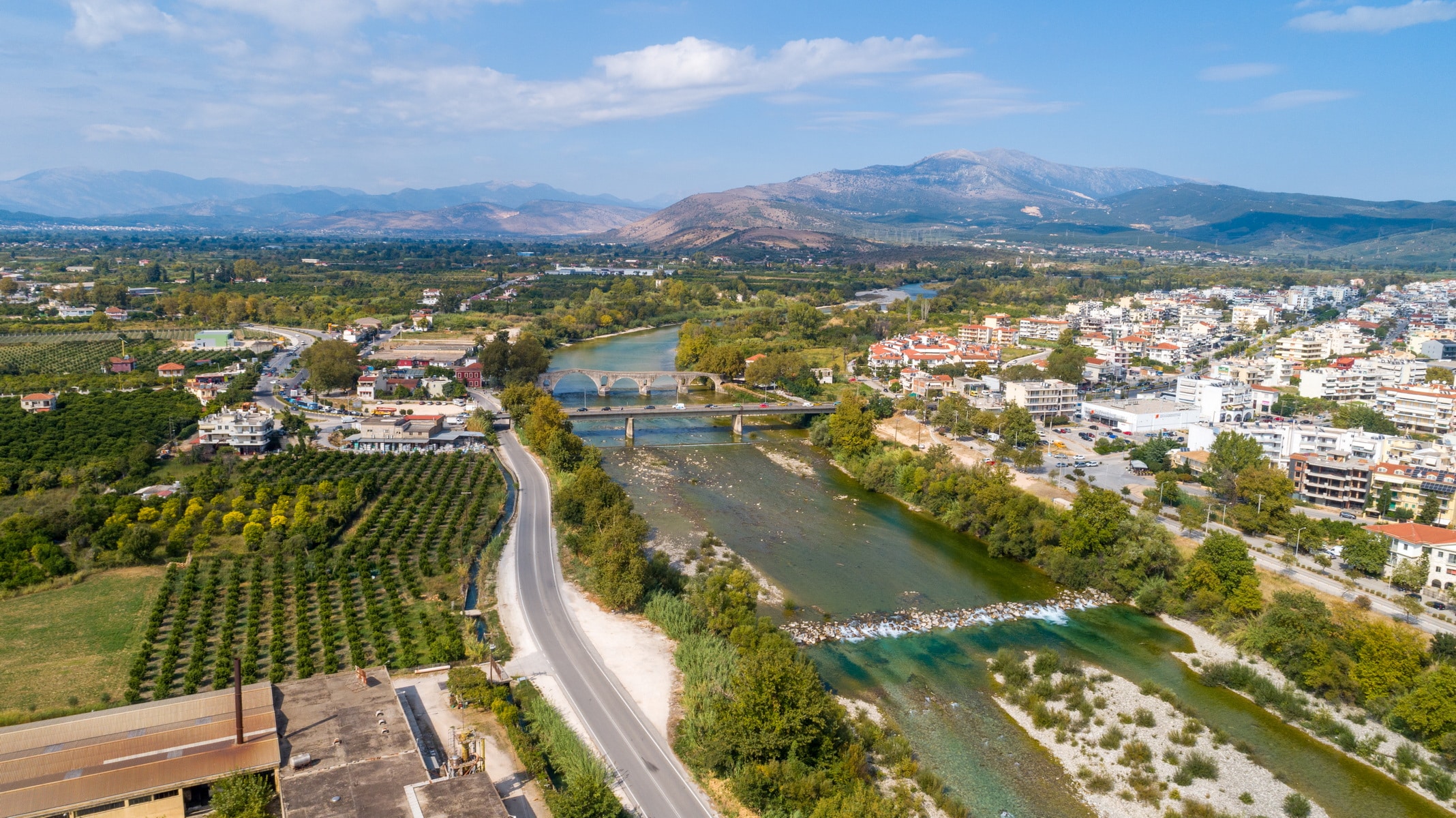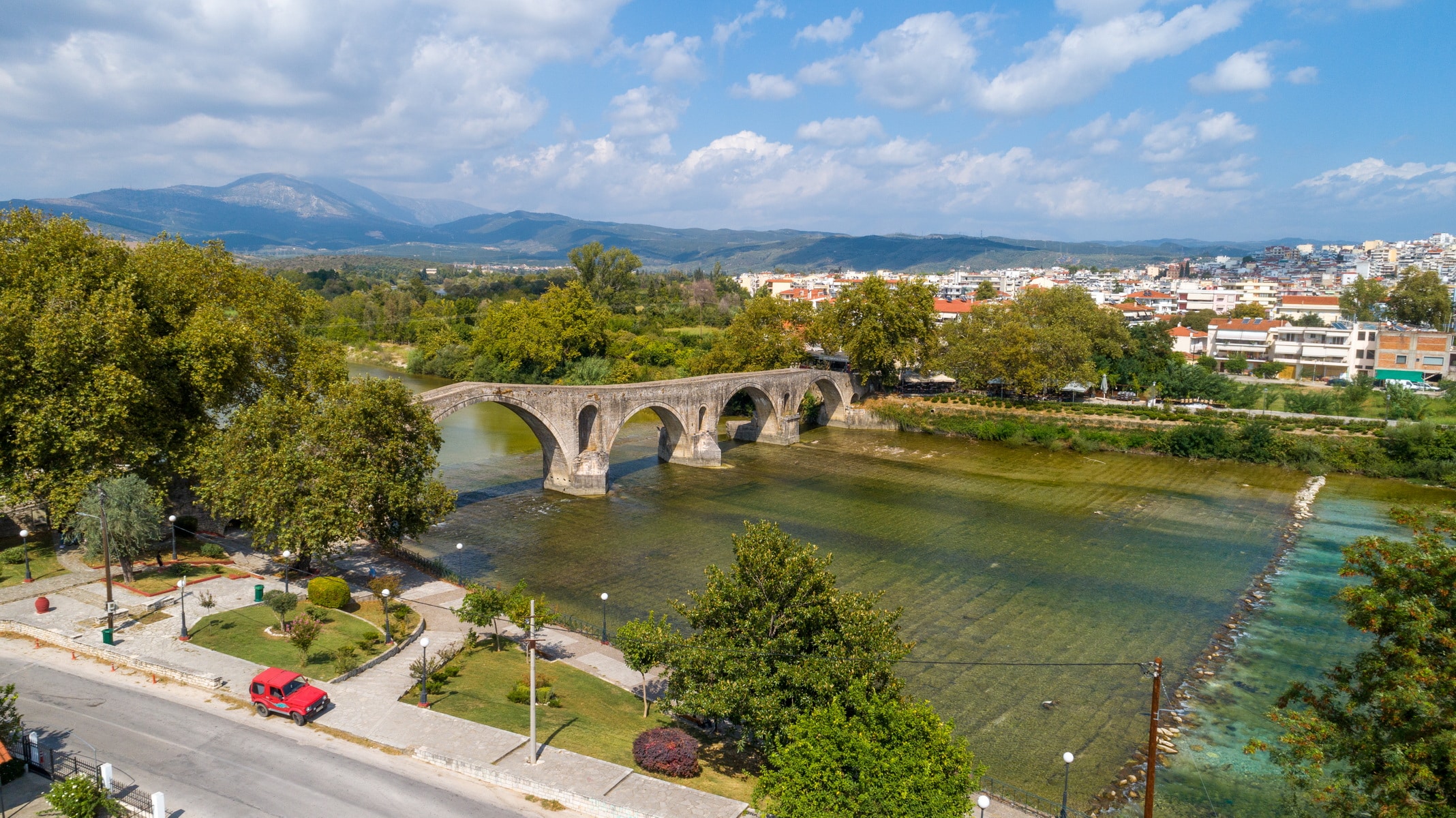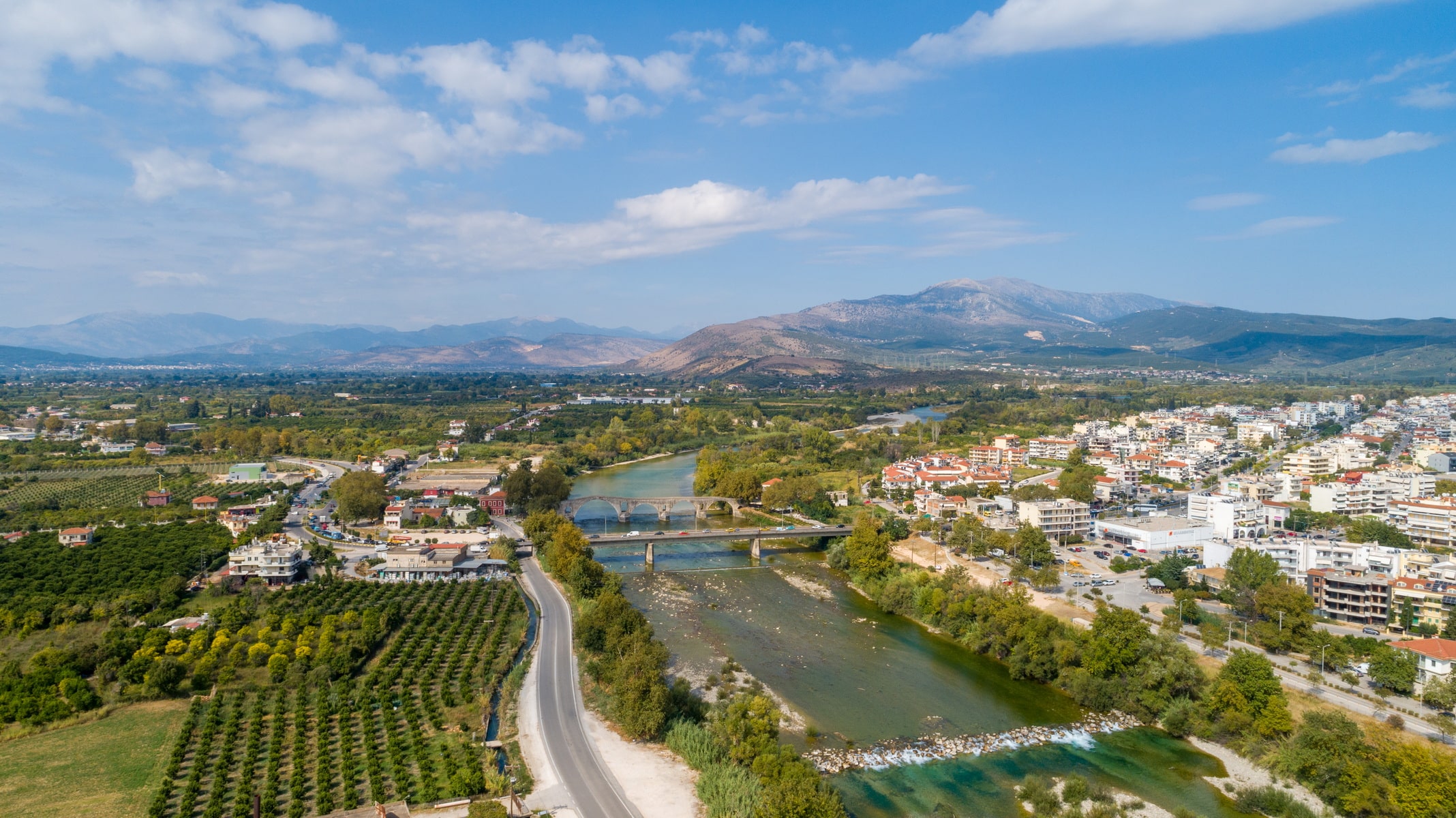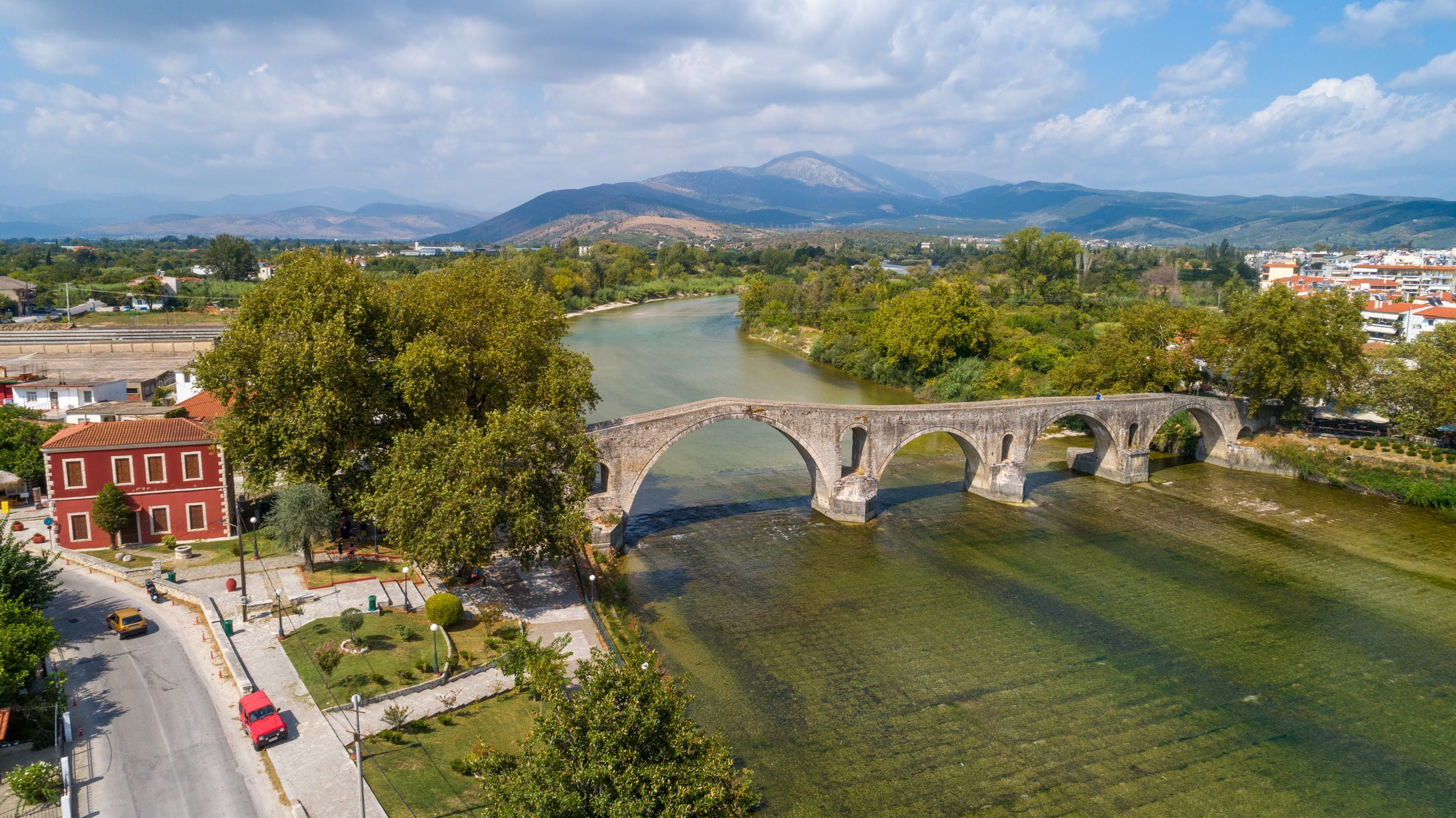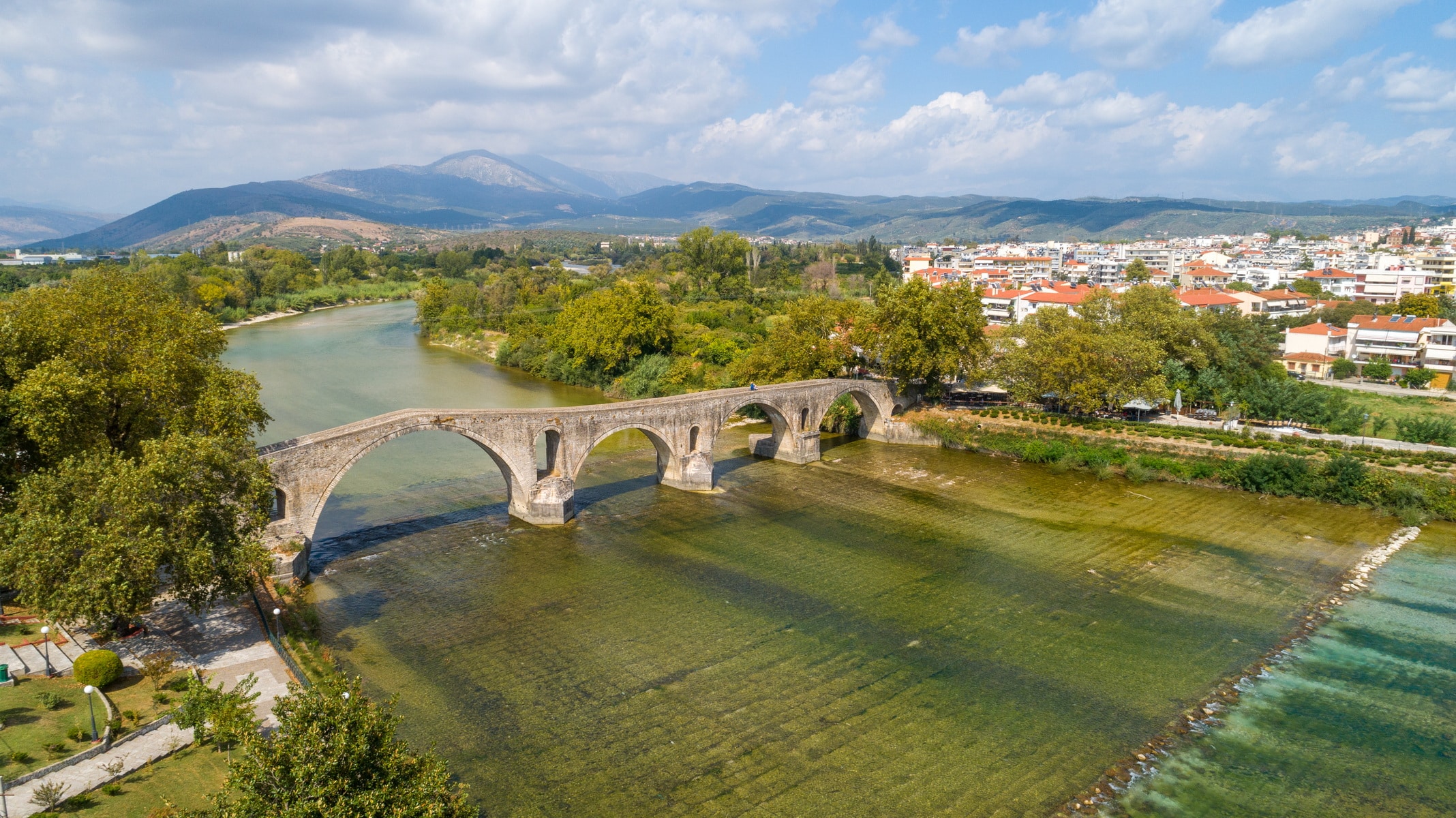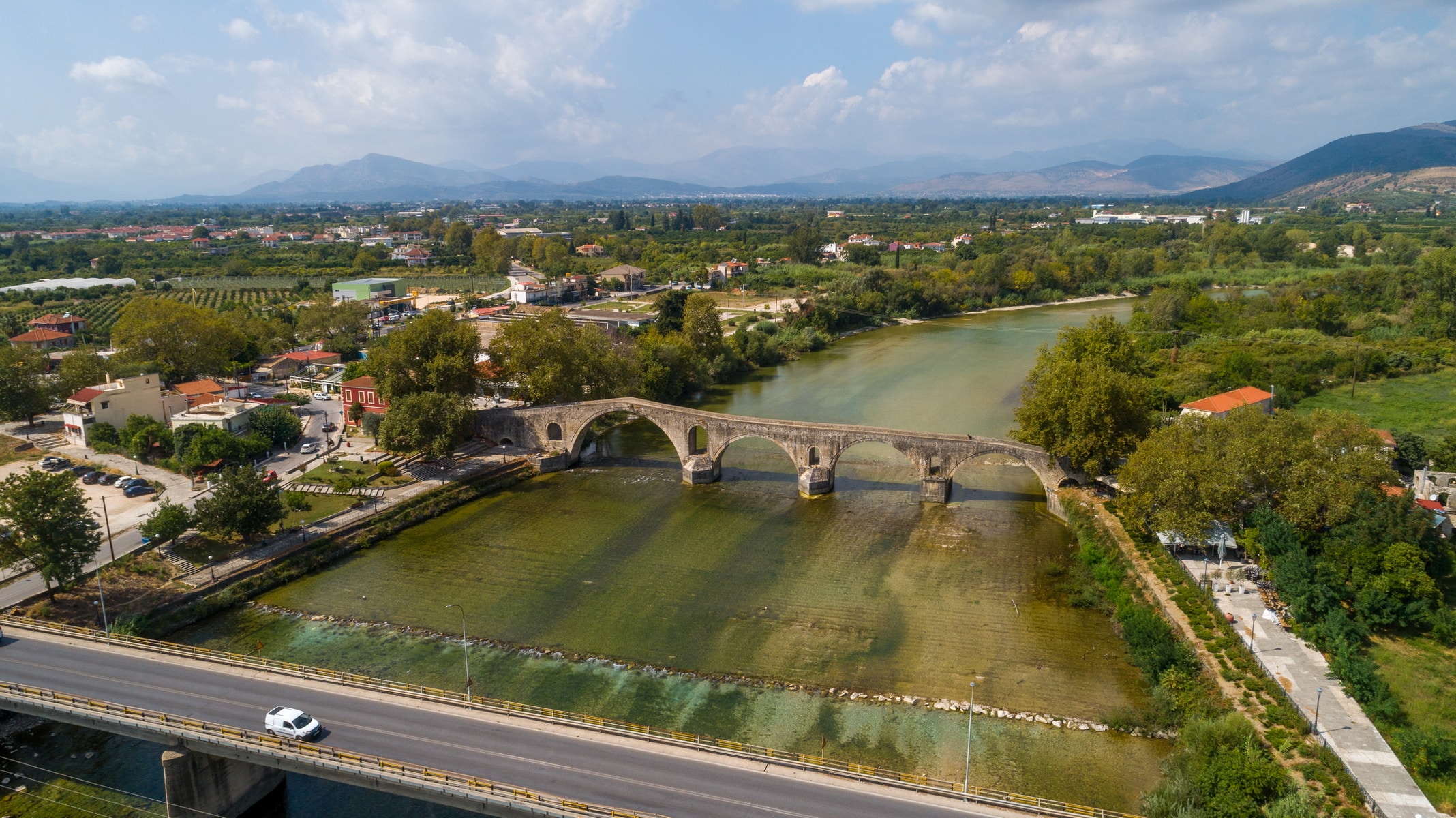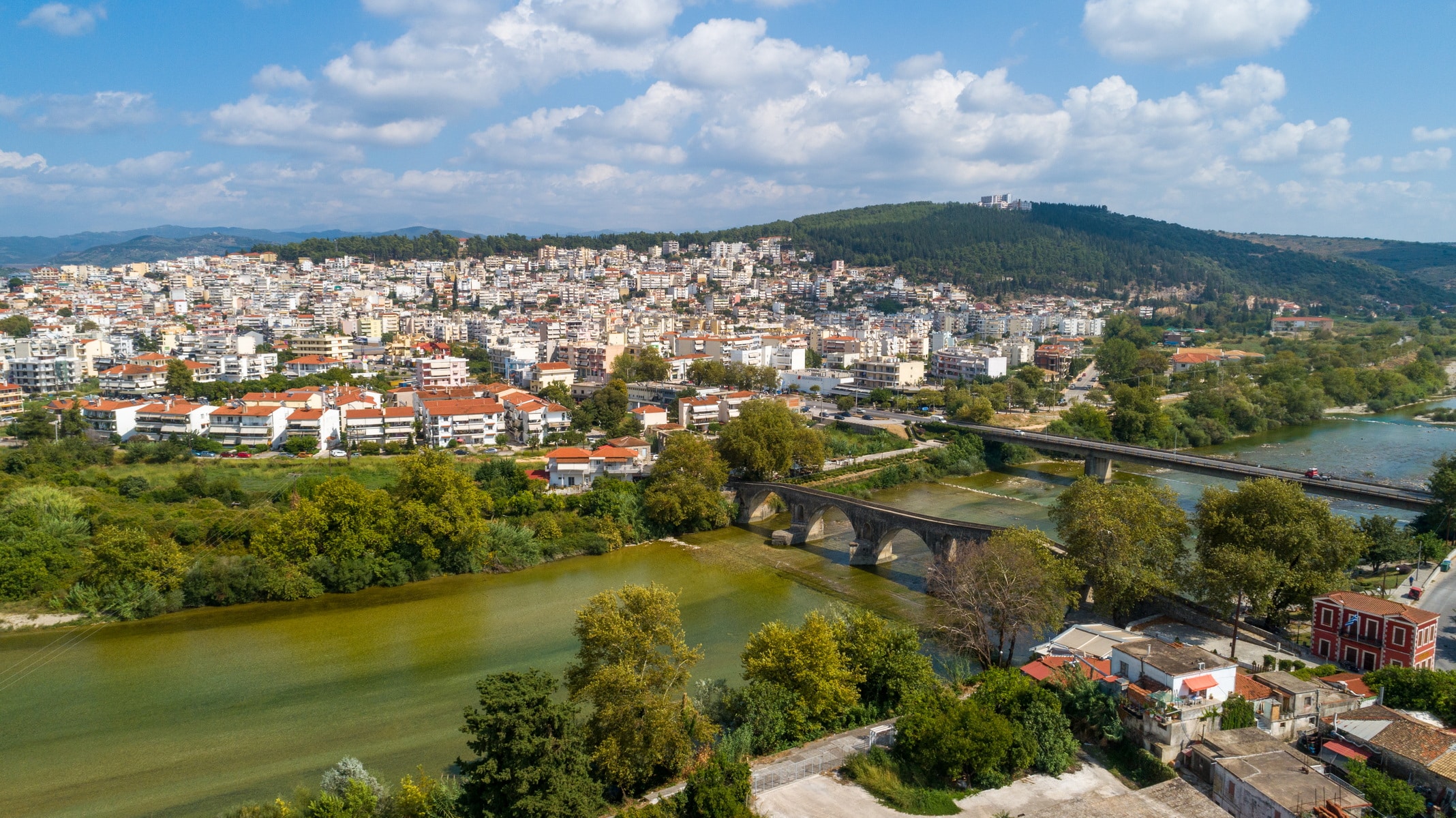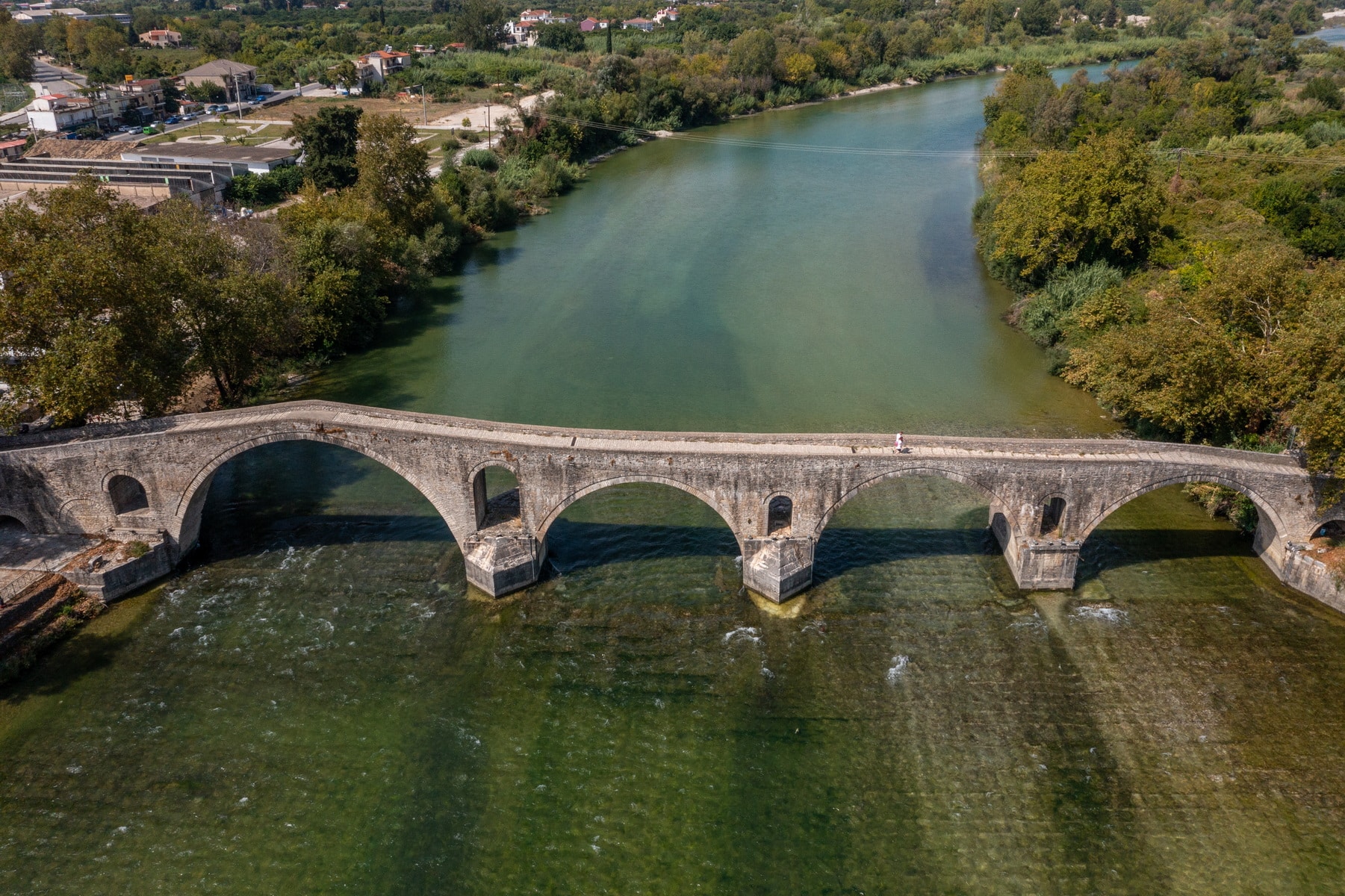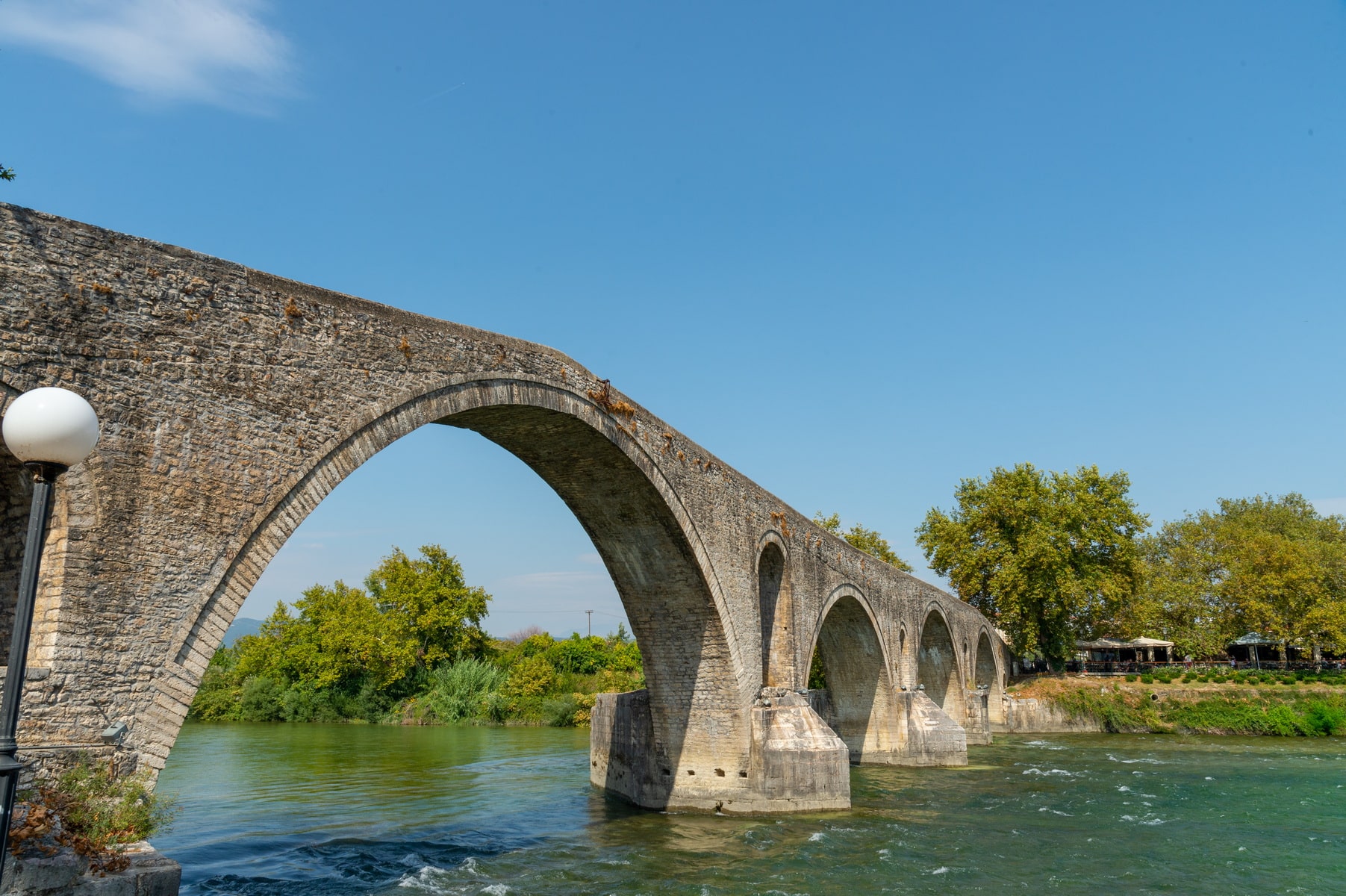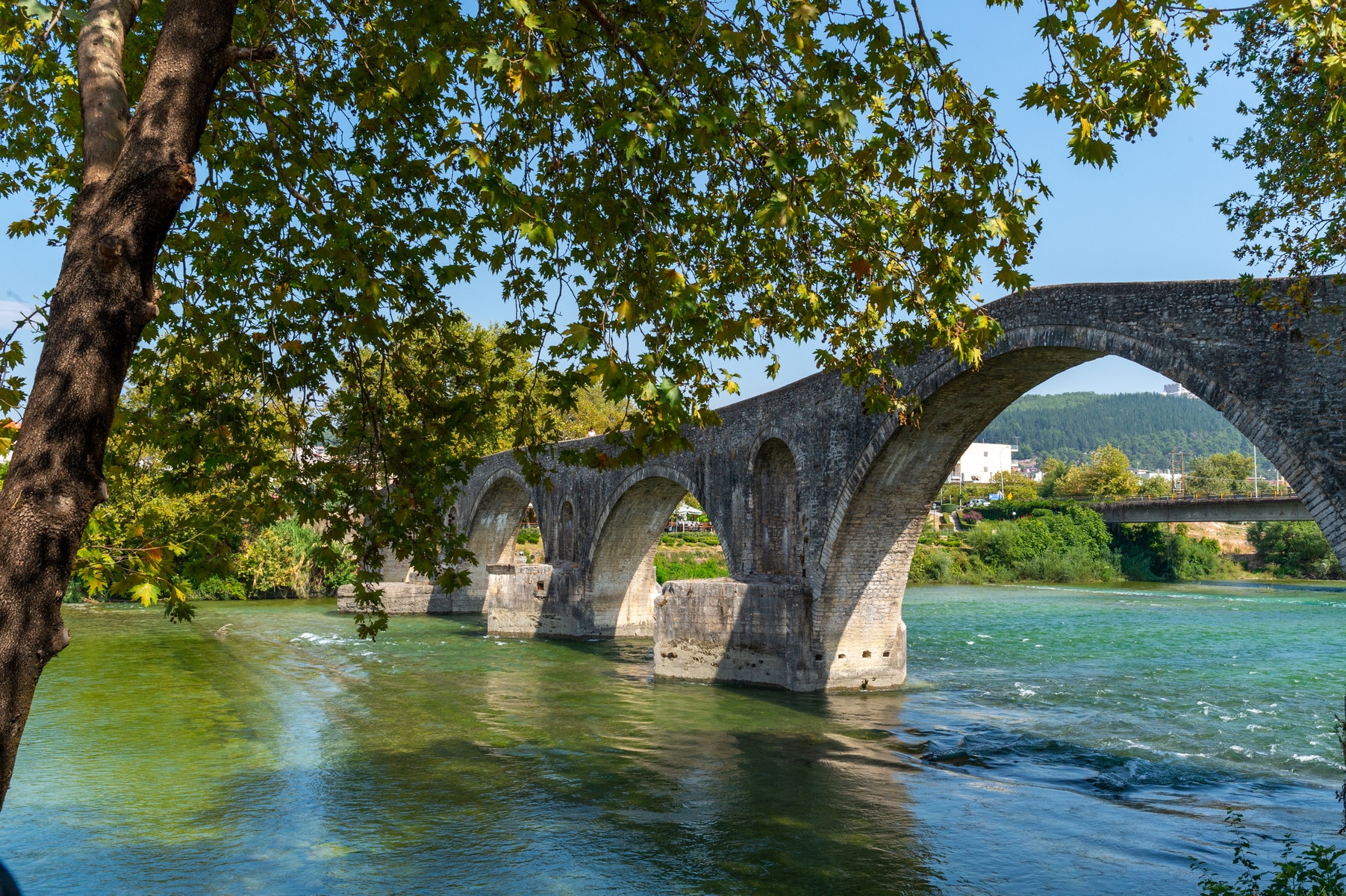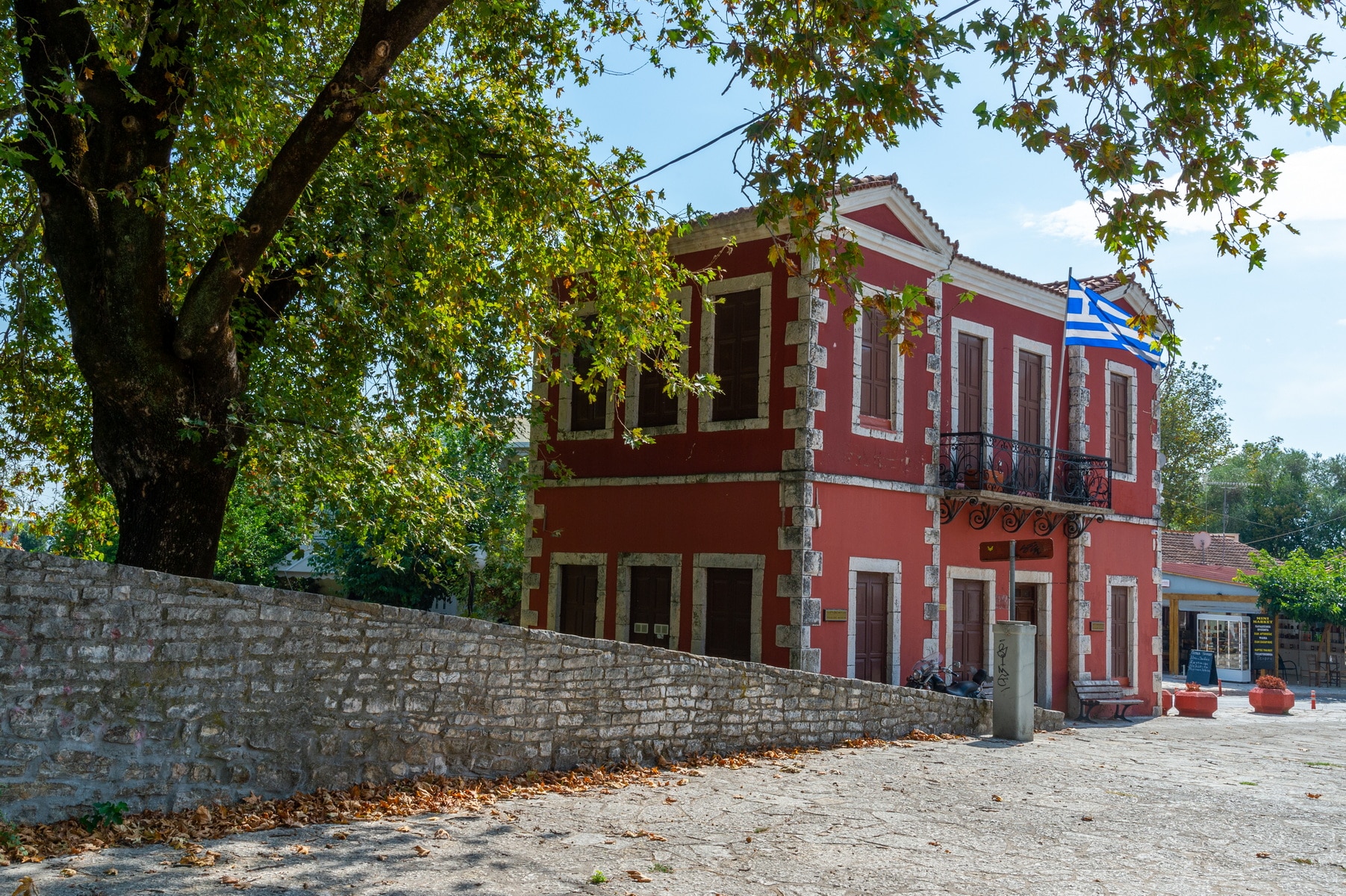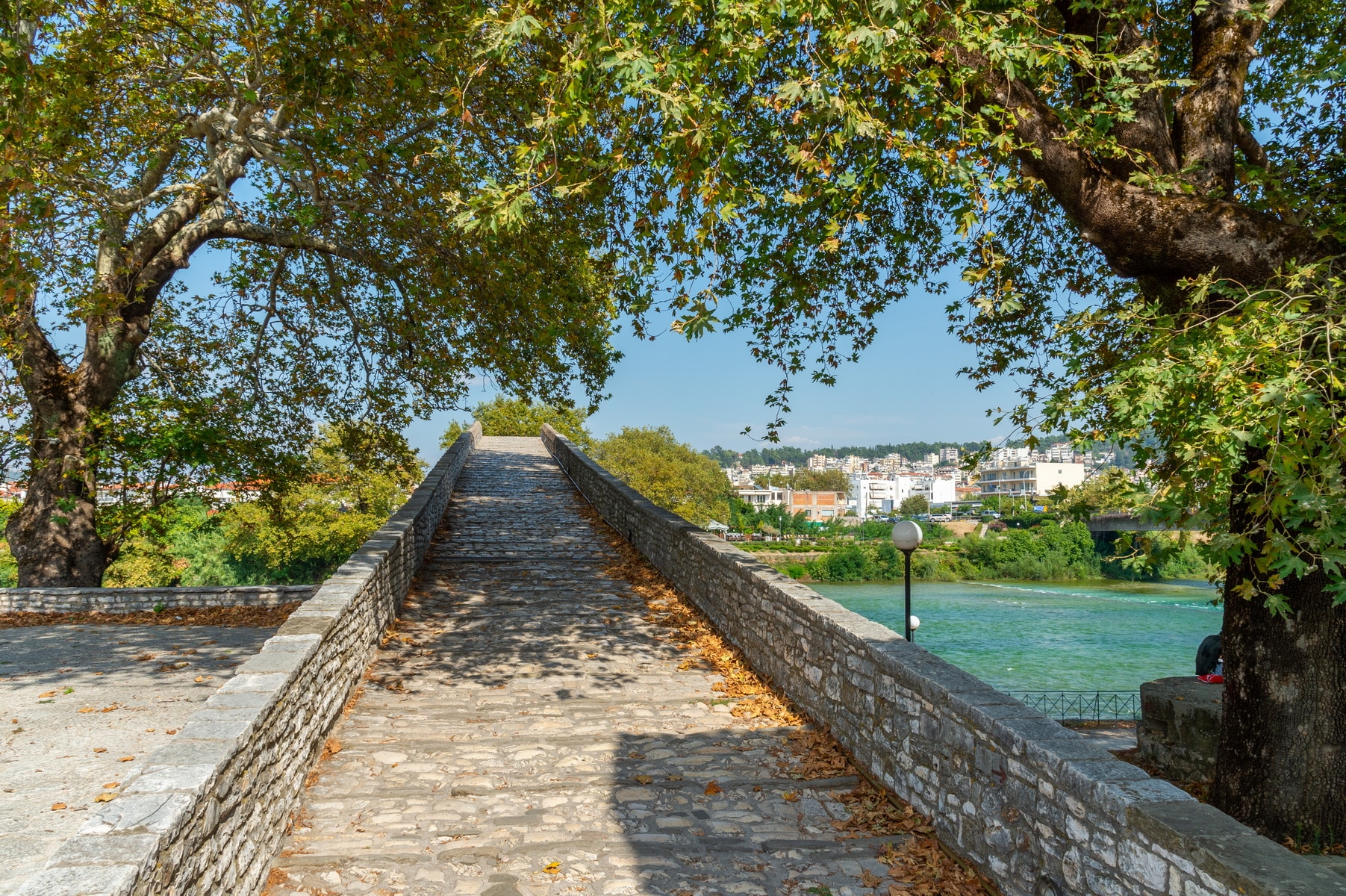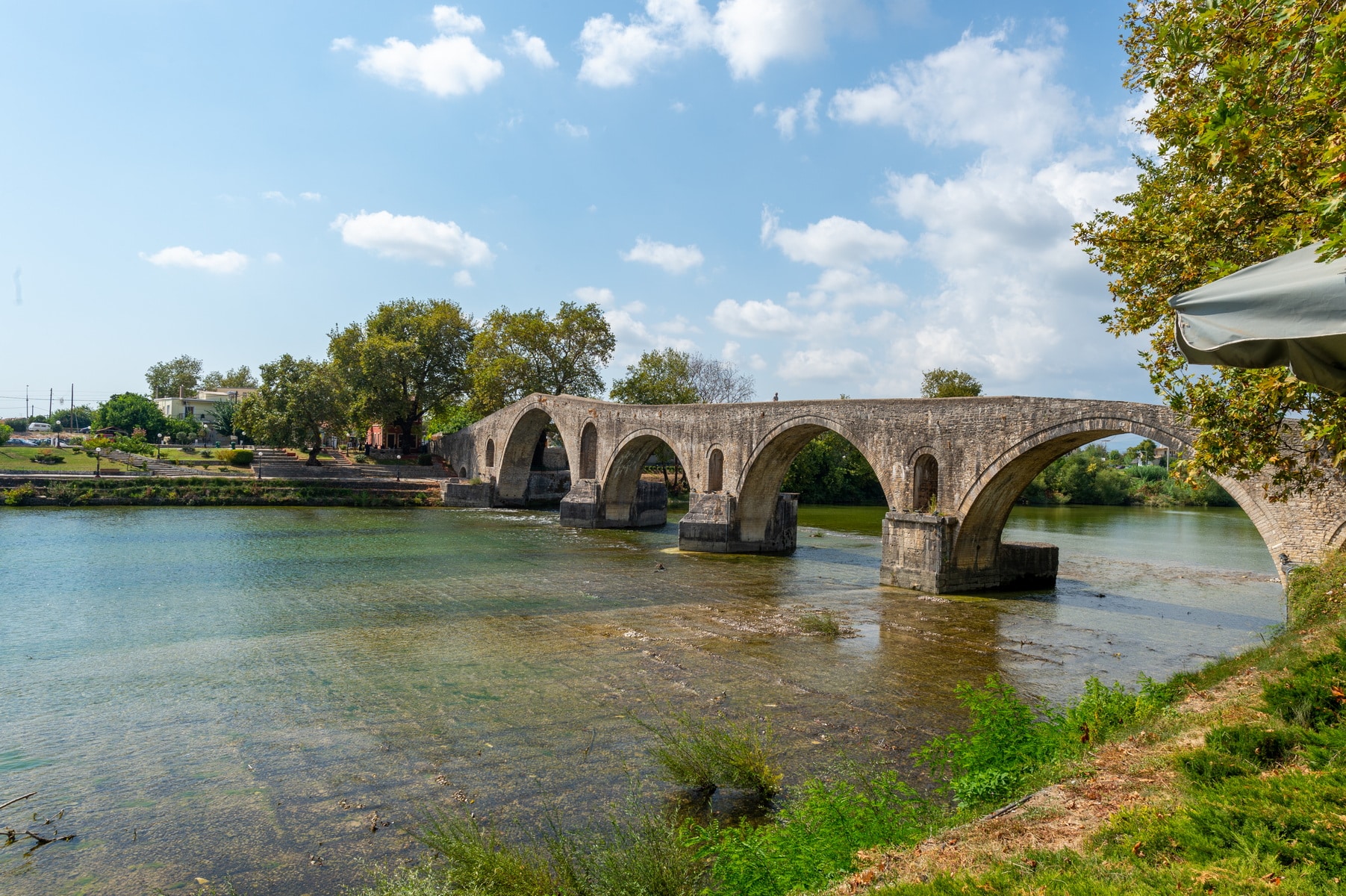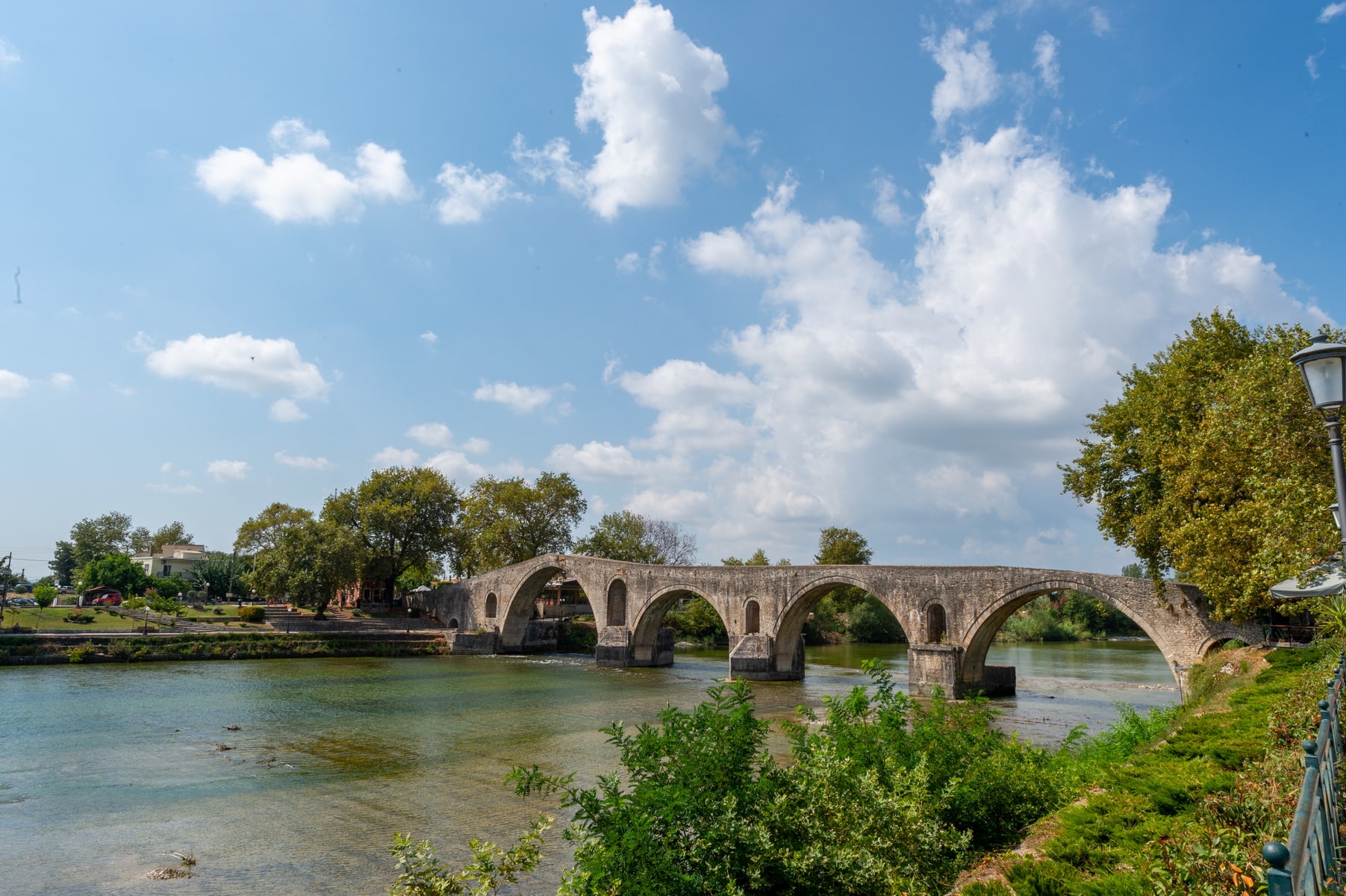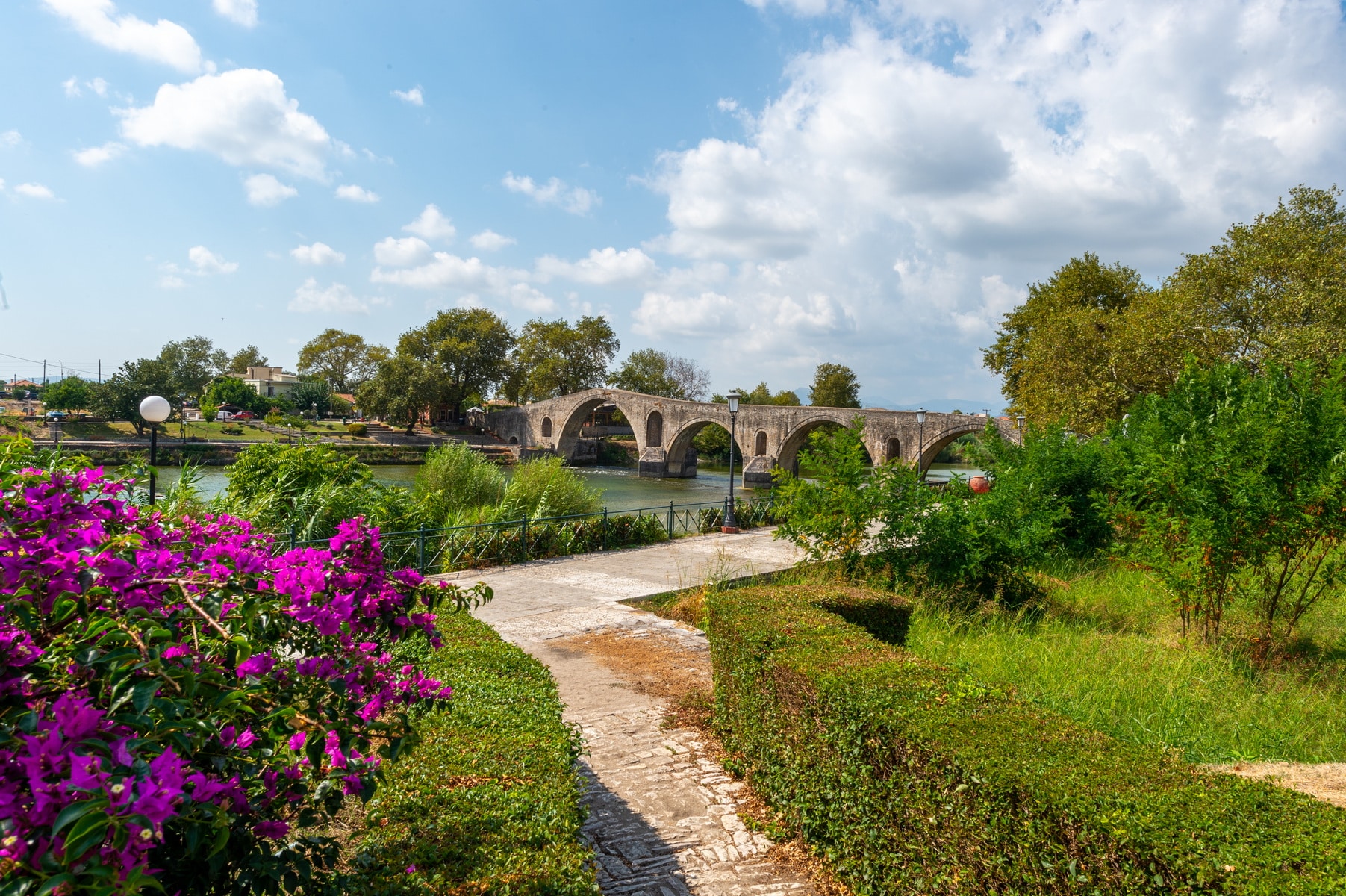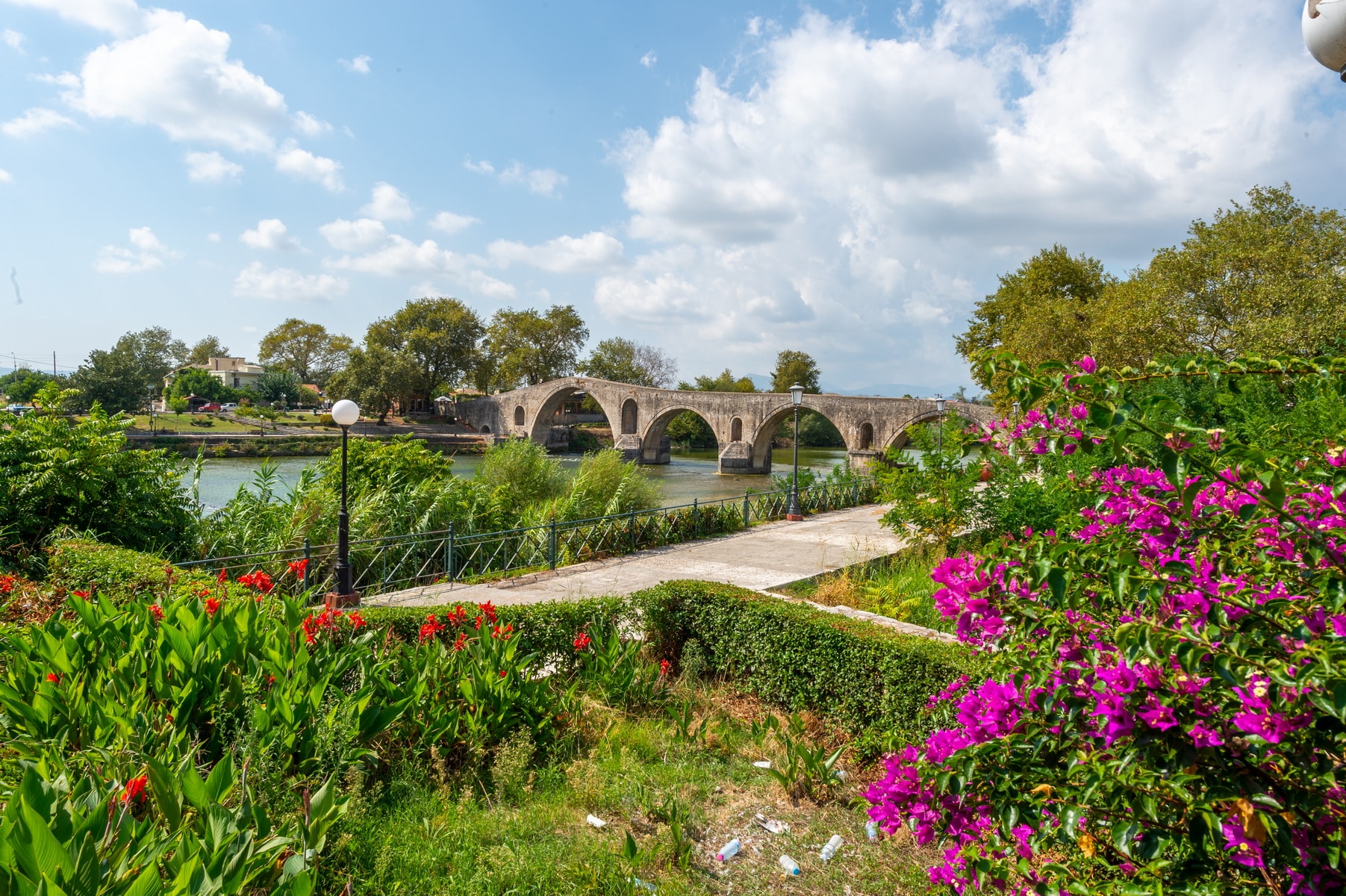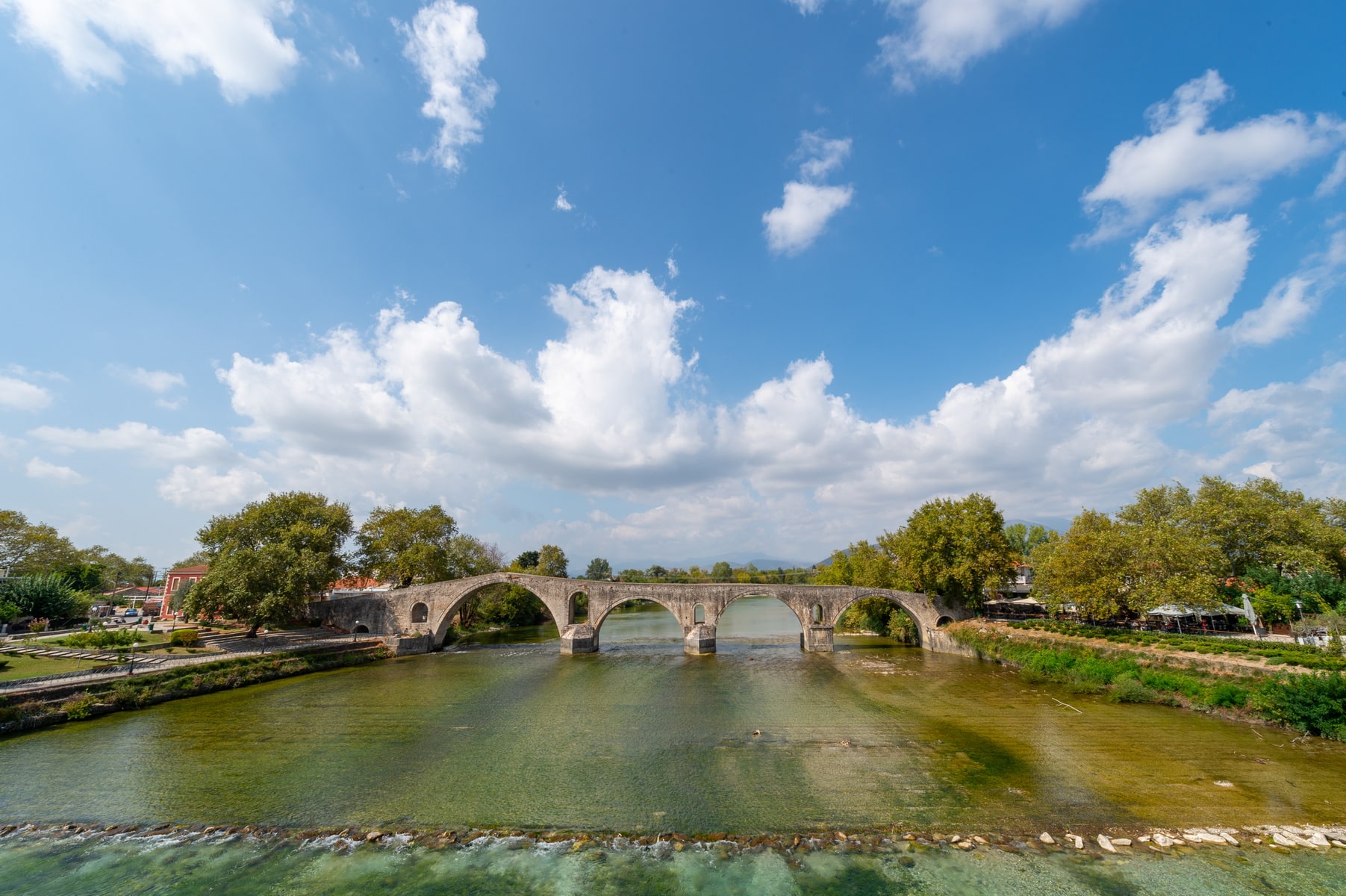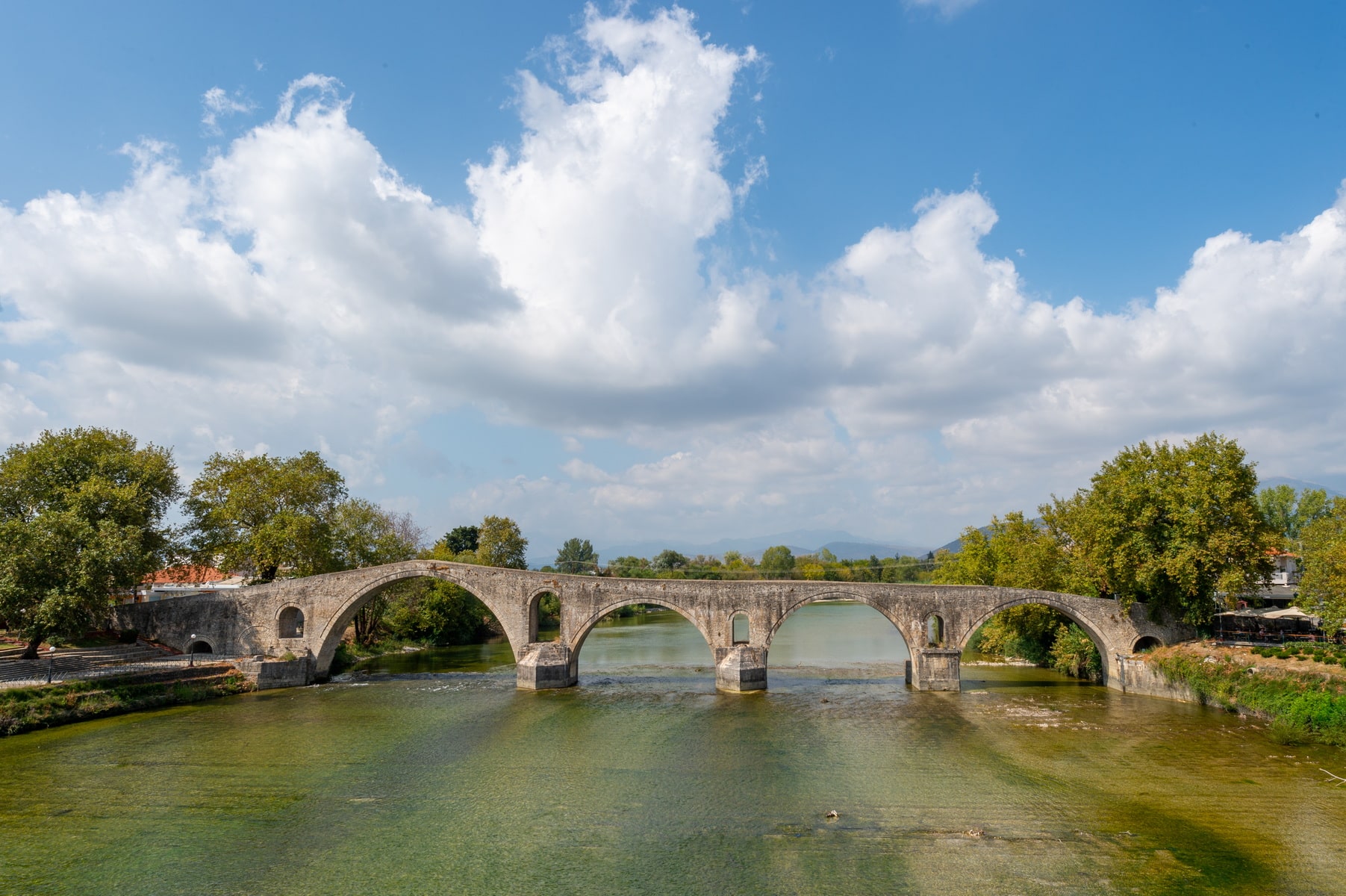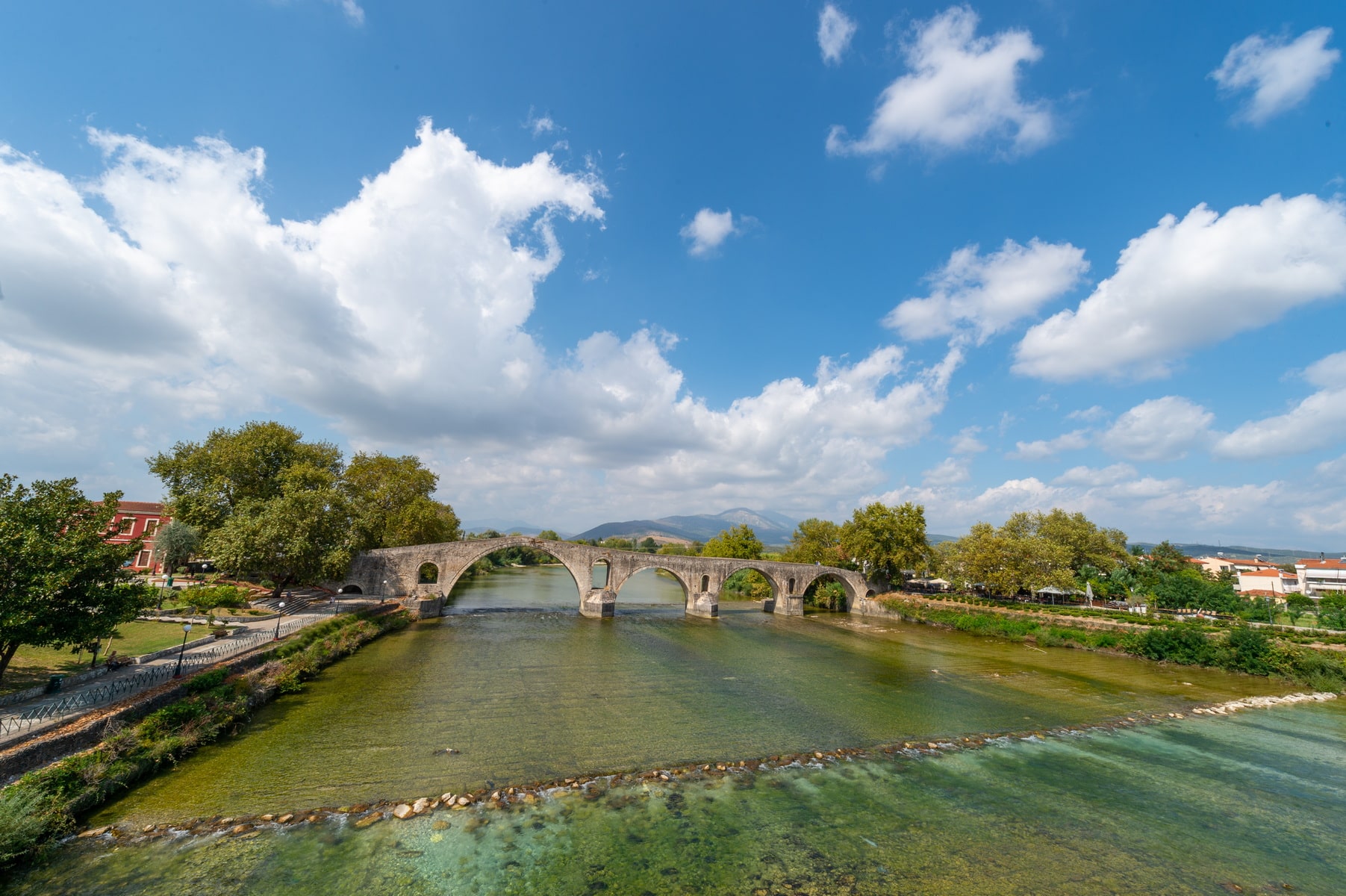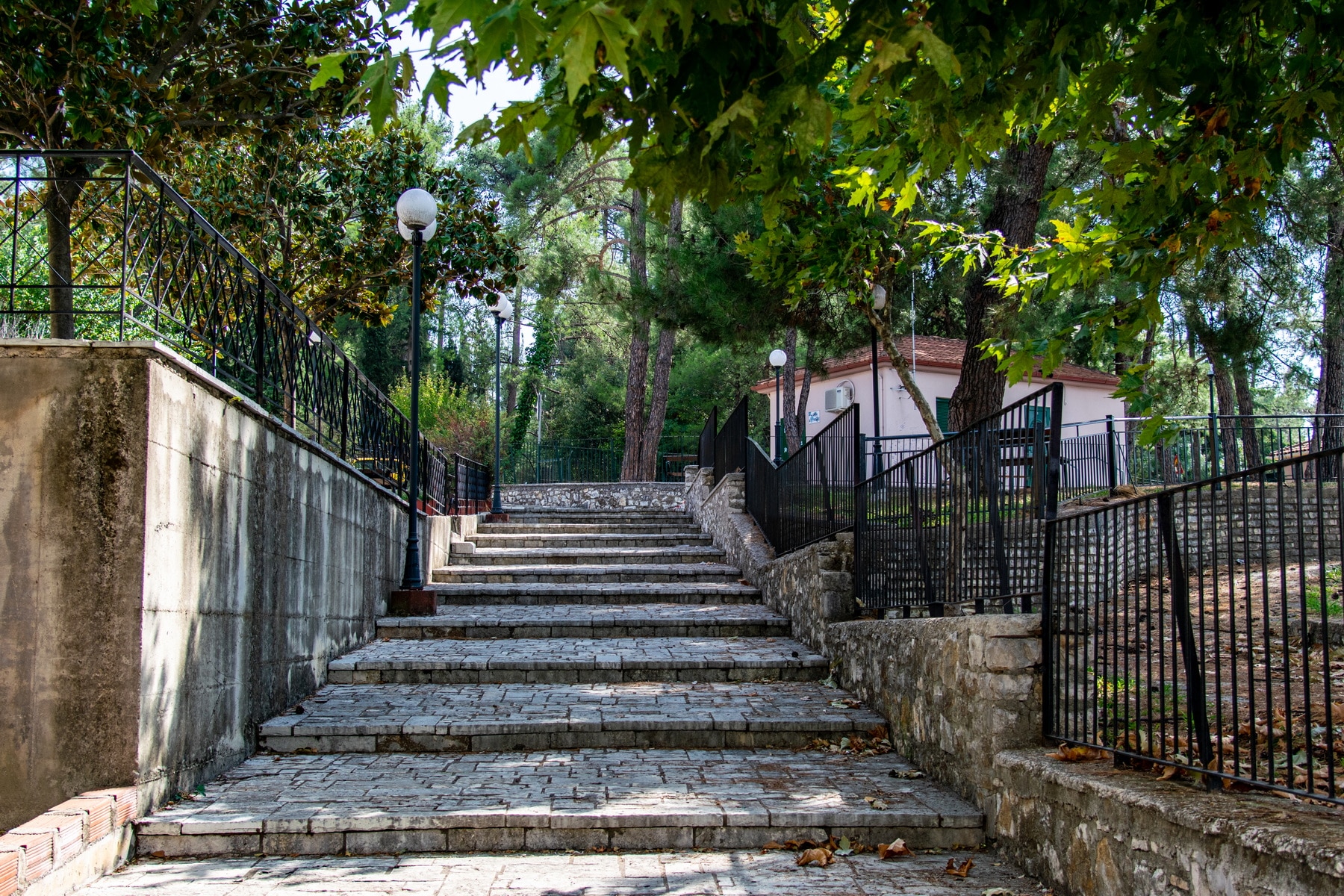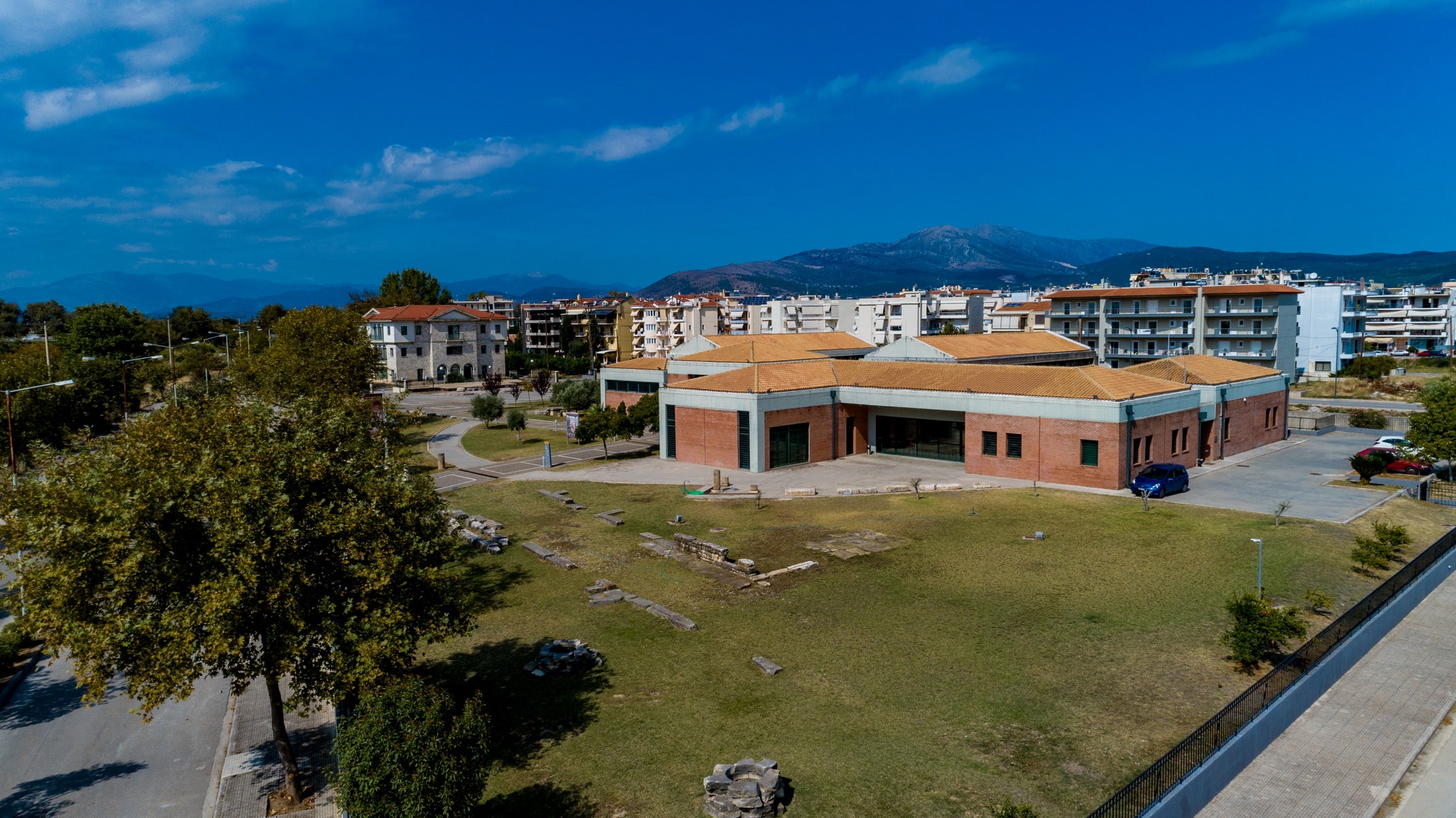Of the Bridge at Arta
Forty-five masons and apprentices sixty
were building a bridge across Arta’s river
All day long they founded it, at night it would fall.
.
.
.
The bridge of Arta is one of the most important Greek bridges, known for its architectural perfection and the master builder’s legend not only in Greece and the Balkans but also in other countries.
History: The Bridge’s history begins before Roman times, probably from the time of Pyrrhus, the king of Epirus (3rd century BC). The construction of its piers with large stones in the isodomic system (composed of stones of uniform size) reinforces this view. The oldest written reference is believed to come from Pliny (1st century AD). The yearly brief excavations that take place in the riverbed when its flow is interrupted are expected to reveal evidence, both for the location of the riverbed in antiquity and for the bridge itself.
Over the centuries, the bridge of Arta has undergone various repairs and additions. The last one took place in 1612, and its current form dates back between 1602 and 1606. According to Serafeim Xenopoulos, Μetropolitan of Arta in the 19th century, also known as Byzantinos, Ioannis Thiakogiannis or Gyftofagos, a grocer from Arta, undertook the bridge’s construction. The sponsor seems to have had a personal interest in the project since he was a merchant, and the easy passage of the Arachthos River would facilitate his activities.
Description: The bridge of Arta has today a total length of 142 m. and a width of 3.75 meters. The four arches are large, semicircular, and asymmetrical. The largest arch has an opening of 24 m and a height of 11.70m. The rest have width: 15.80, 15.40, and 16.20 m. and arch height, 9.00, 9.60, and 9.30 m, respectively.
Literature and legends: The legend of the master builder, who sacrificed his wife to set the bridge’s foundations, became the subject of many folklore studies and inspired many plays, operas, paintings, and engravings.
“”Ali’s plane tree”” lies at the bridge’s eastern end, and it is said that the fighters of 1821 were hanged there by Ali – Pasha of Ioannina, who sat in the tree’s shadow and enjoyed the macabre spectacle.
A traditional folk song refers to this story: “”-What ails you, poor plane-tree? Your roots drink their fill, yet your leaves hang lifeless.
-Ali Pasha has passed this way, and I can not drink.





